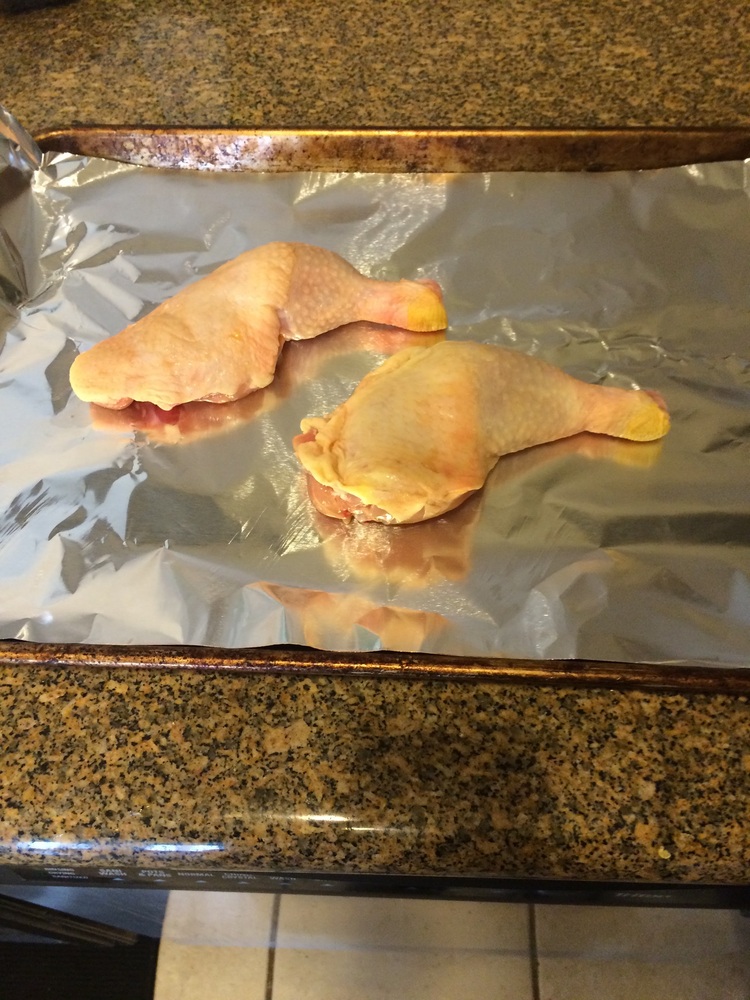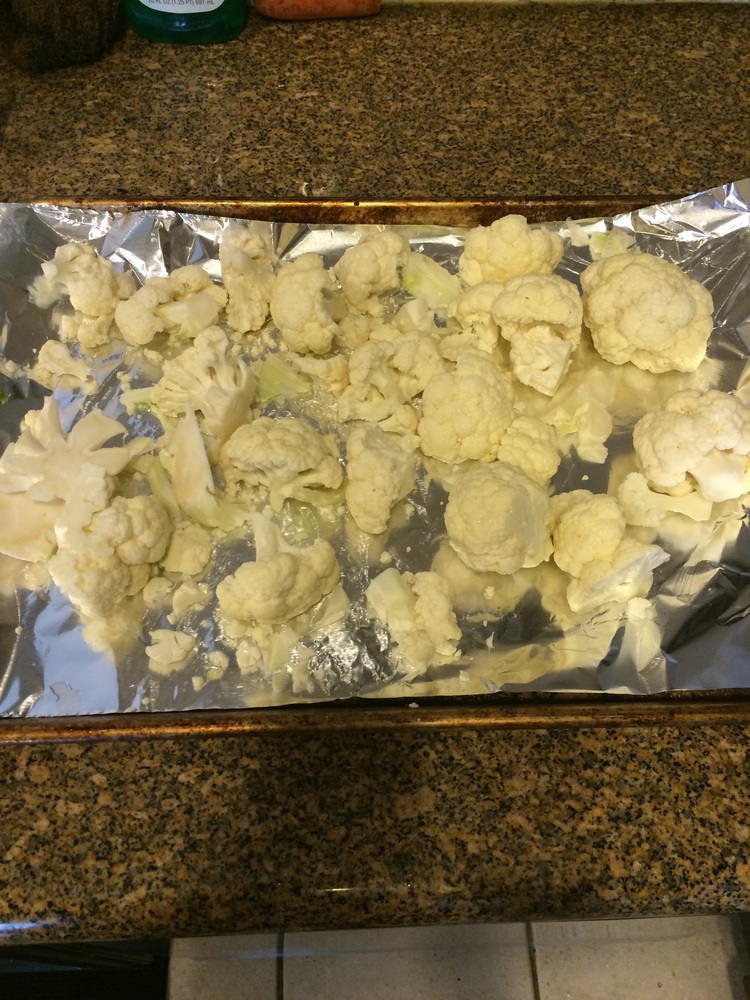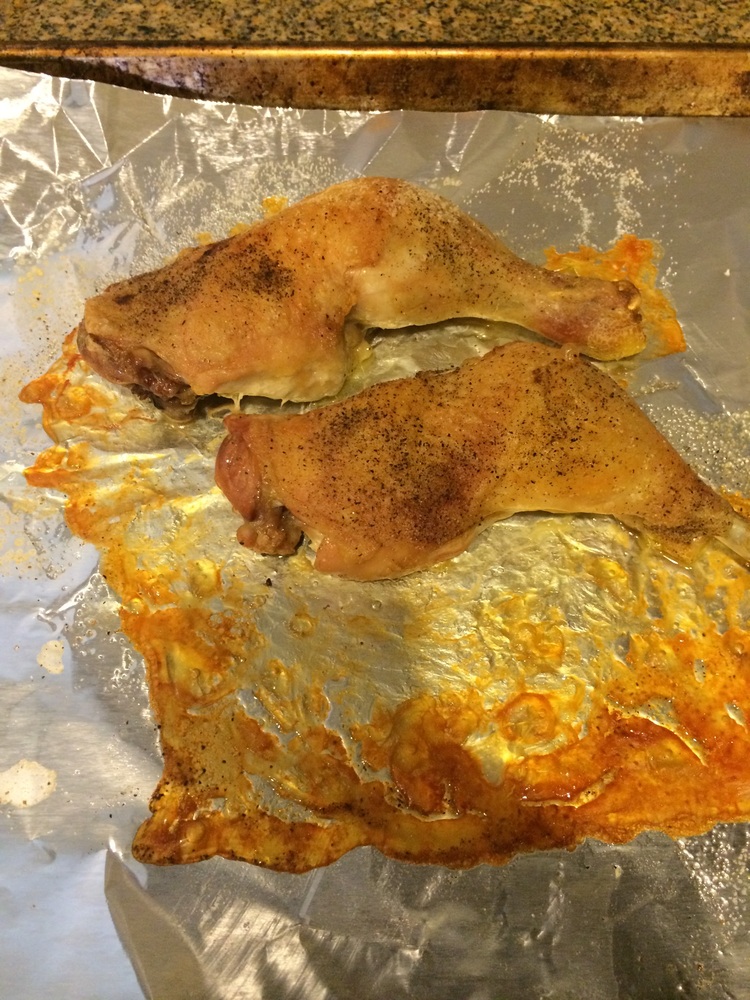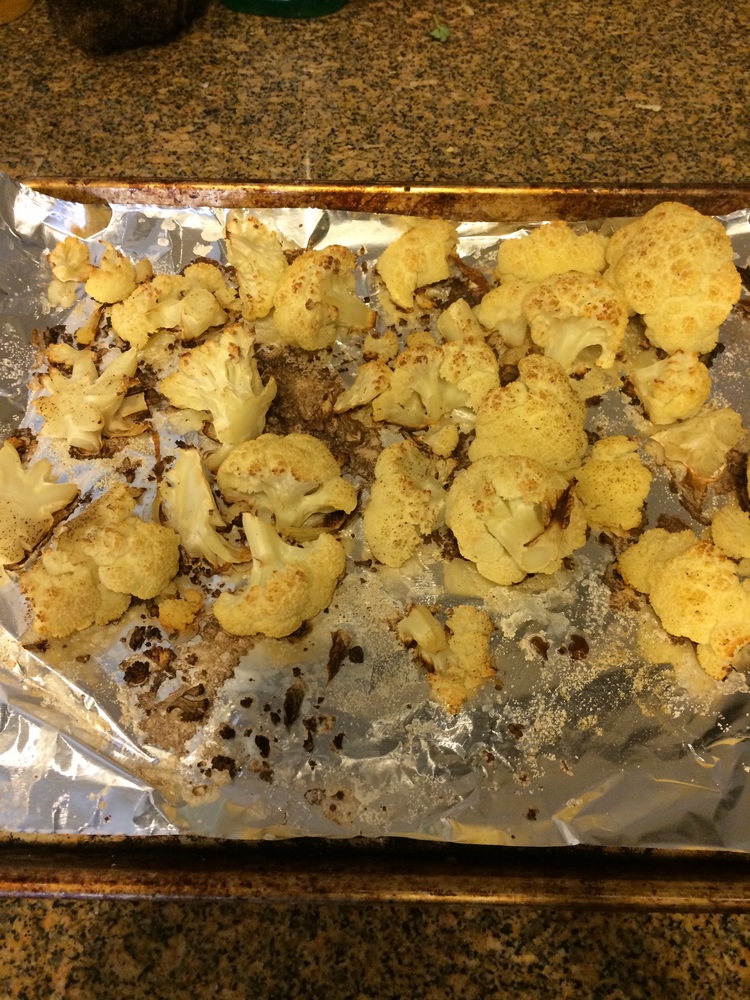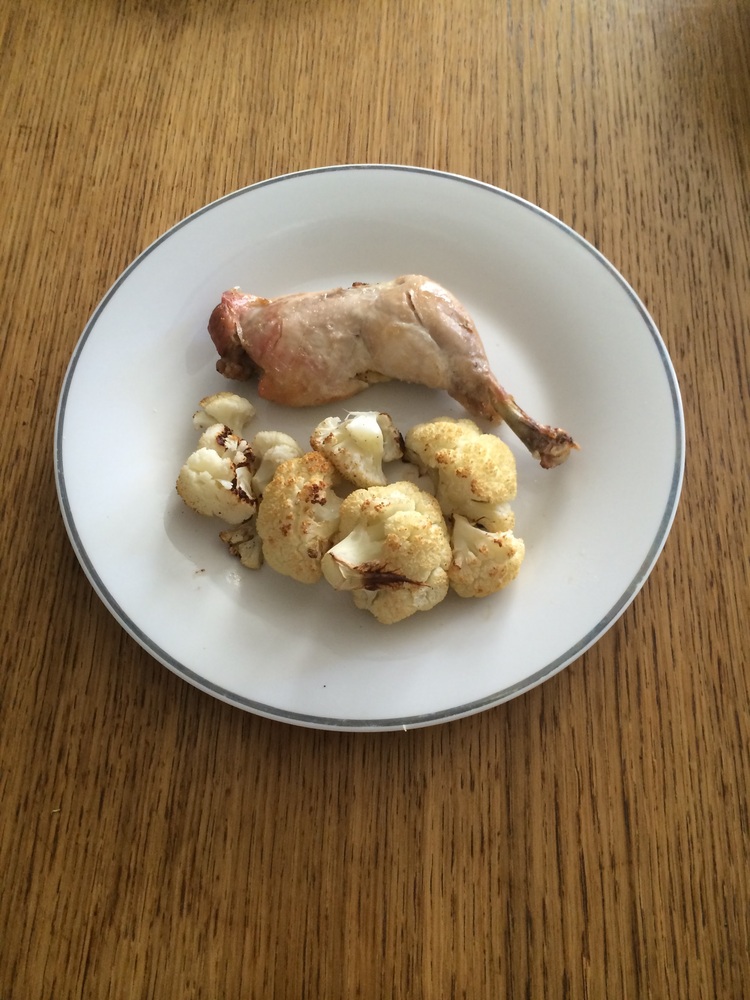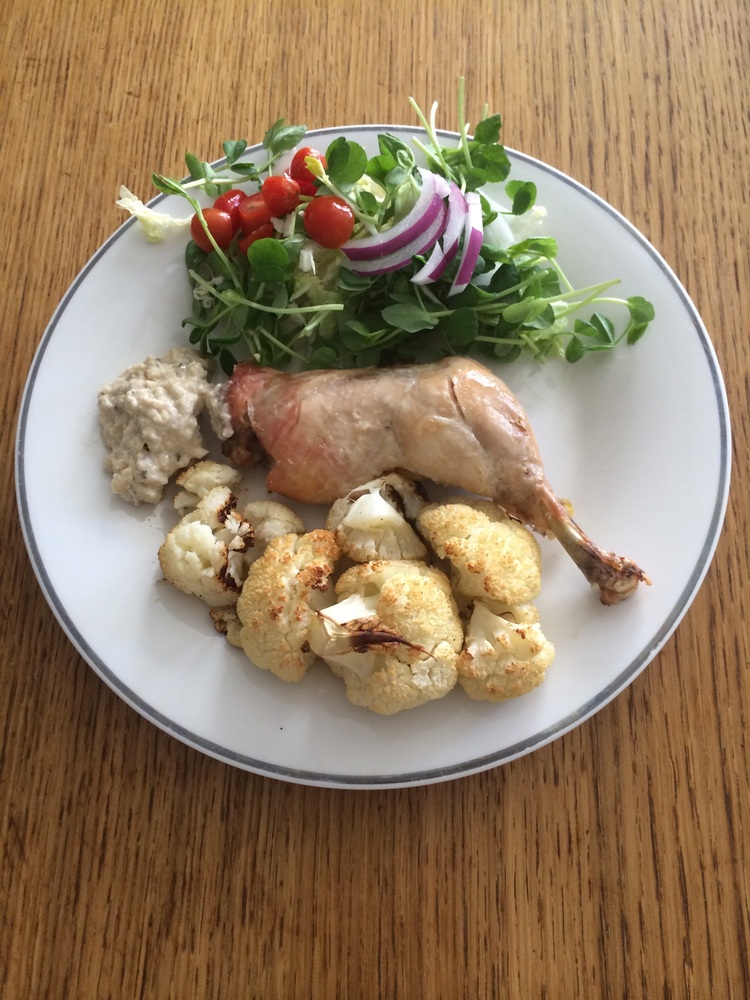How to lift weights to gain strength and muscle
TLDR: What you need to know
- Your goal when you lift weights is to improve strength. If you gain strength, you will gain muscle. To improve strength, you must track your workouts, and plan on progress. Not doing so results inevitably in lack of progress and wasted time aka "F-arounditis." Everyone on the Ray Wu MD program tracks their workouts.
- Rule 1: Keep it simple. Focus on the most important movements which include bench press, squats, deadlifts, and pull-ups. There are valid reasons to not do these core exercises, but not many.
- Rule 2: Write down your workouts, every time. This is immensely important.
- Rule 3: Challenge yourself to best what you did last time, based on what you wrote down (not how you feel).
- Following these 3 simple rules will get you way further than you'd ever believe.
Ray's Take
When I read this article from Martin Berkhan 10 years ago, I thought it was one of the best articles I'd ever read.
I highly recommend reading the full article - Martin nails so many points (and it is hilarious).
- The vast majority of people that work out never make any progress in strength or aesthetics. He calls this Fuckarounditis.
- The reasons for this are "the illusion of complexity" aka people think complicated is better, whereas in strength training, the right choices are "limited and uncomplicated."
- The right choices are to focus on the core lifts of bench, squat, deadlift, and chin-ups.
- The only way to improve is to write down every single workout you do.
- You try to improve today's lifts vs the same lift last time.
I immediately adapted this to my life, and have kept a simple spreadsheet tracking my bench, squat, deadlift, and chin-ups that i've kept up to date for the last 10 years. Here is a sample for workouts i did in a month:
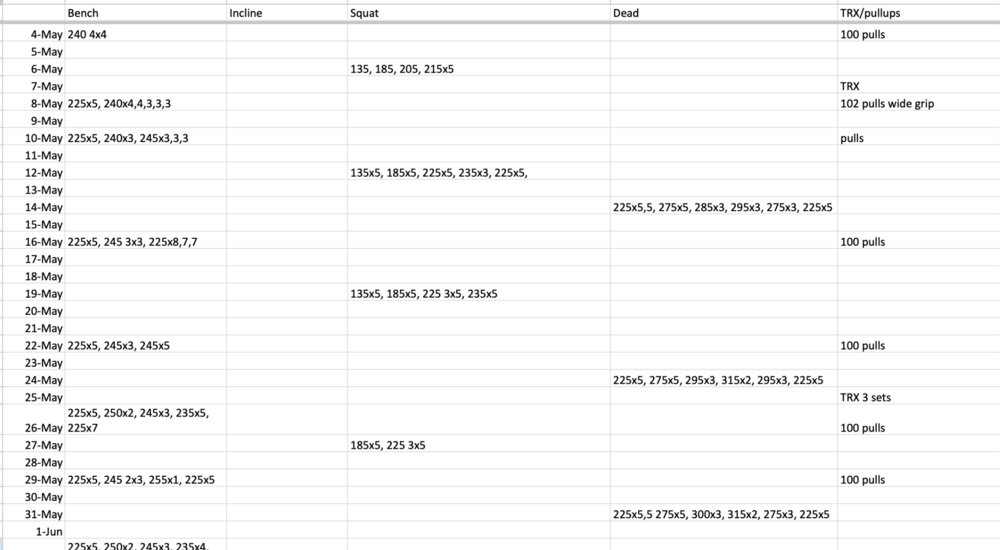
Through just keeping it simple, and writing down my numbers, I got to a bench press of 295 lbs, squat of 340 lbs, deadlift of 460 lbs, 5 sets of 34 chin-ups(while weighing ~150 lbs).
This is about what I looked like at the time (and don't look that much different now, though I lift a bit less weight)
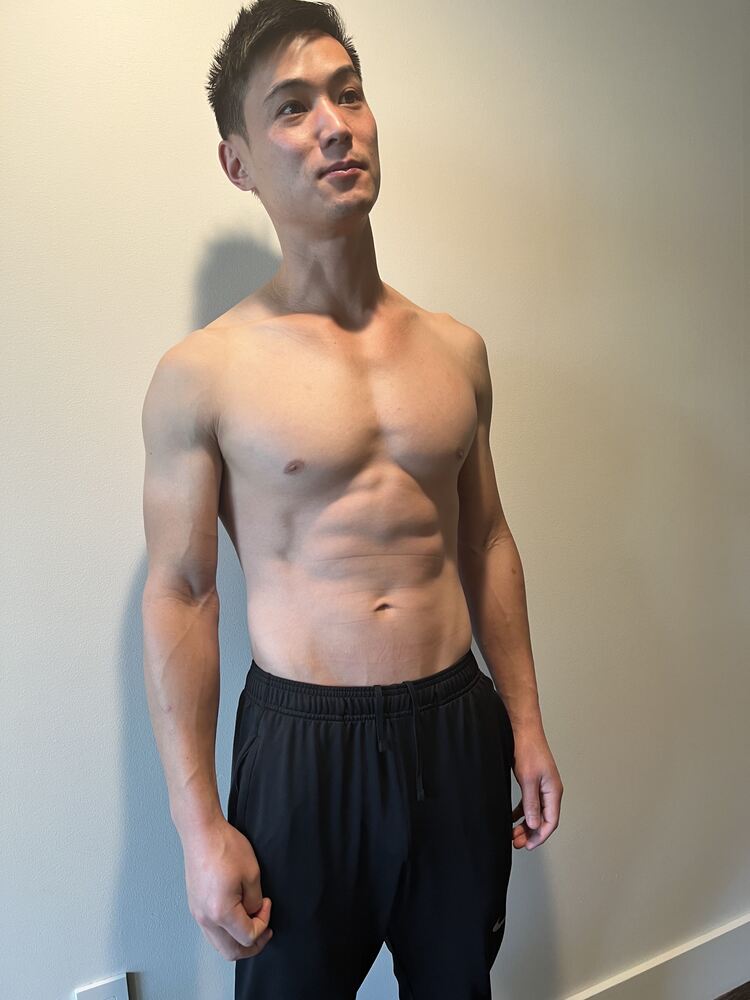
Does this mean you have to bench, squat, deadlift, and do chin-ups?
No, but you should have a good reason if you want to improve strength (and aesthetics) and don't want to do these core lifts.
Does this mean you should not do other exercises like bicep curls, tricep pushdowns, and "abs"?
You can if you want, but know it is for your own fun vs actually being necessary. I don't really do ab exercises, and only do "biceps" at hotel gyms.
Even if you choose not to do the core lifts, it is essential that you track all of your workouts, and plan for progress.
Again, this means you challenge yourself to beat what you actually lifted last time on the same exercise:
- one more pound of weight with the same number of reps
- Same weight, with one more rep
- Same weight, same reps, with less time in between sets
- Same weight, same reps, more difficult or new angle (IE incline bench instead of flat)
You must methodically improve no matter what!
Beyond Strength Training
Beyond strength training, I believe the concept of avoiding F-arounditis applies to many other concepts in life and health. It applies to:
- Training for and improving VO2 max
- Eating well to improve body fat %
- Monitoring and improving biomarkers like apoB
- Improving sleep habits
- Improving your tennis game
- and more...
While the amount of tracking and measurement varies by the use-case, I really believe in tracking and planning for progress. Not doing so leads to a high risk of F-arounditis.
Next
Goals for strength from beginners to advanced (and a simple workout plan to improve)
Why you should lift weights and build strength
TLDR: What you need to know
- Lifting weights is the best way to build muscle, and gain strength. These are two of the most important things for maximizing your youthfulness. We develop a personal workout plan for everyone on the Ray Wu MD program
- In addition to looking better if you have more muscle, strength is one of the strongest predictors of longevity.
- Lifting weights is also the best way to improve and maintain bone density.
- Virtually everyone in all age categories should lift weights. It's never too late to start.
Ray's Take
I love lifting weights. I've been doing it since college, and truly enjoy it. To be honest, I think one of the biggest unfair advantages I have is that I look forward to going to the gym. It is not a chore and in fact, if i could lift heavy every single day, I would (you shouldn't do this).
The other advantage that I have, is that I have a gym at my home. The convenience of being able to lift whenever I want, without needing to drive or walk to a gym is priceless.
Because of the two factors above, I've experienced so many personal benefits. Of course looking good (this honestly has more to do with nutrition than lifting), but more importantly being strong, feeling strong, having high relative lean muscle mass, low body fat, and 99th percentile bone density.
I should also mention that lifting weights is also a form of therapy for me. When you are lifting heavy, you can't really think about anything else, which is a joy in itself.
You can also experience all of these benefits, and more. It's never too late to start (or restart). As you'll see below, lifting and increasing strength are even more important as we get older!
Cool knowledge for normal people (bullet points!)
- People lose 35-40% of muscle mass between age 20 and 80 Keller et al
- You lose at least 1% of strength per year as you age Keller et al
- The stronger you are, the longer you live Newman et al
- Strength is more important than muscle mass Newman et al
- If you increase strength, you'll almost always increase muscle mass too Li et al
- Lifting weights is the best way to improve bone density. Watson et al
- Did we mention, lifting makes you look good and feel good?
Tool knowledge about Ray (optional)
Current physique (1/14/2024 after drinking and eating in Napa)


Photos in home gym in 2023

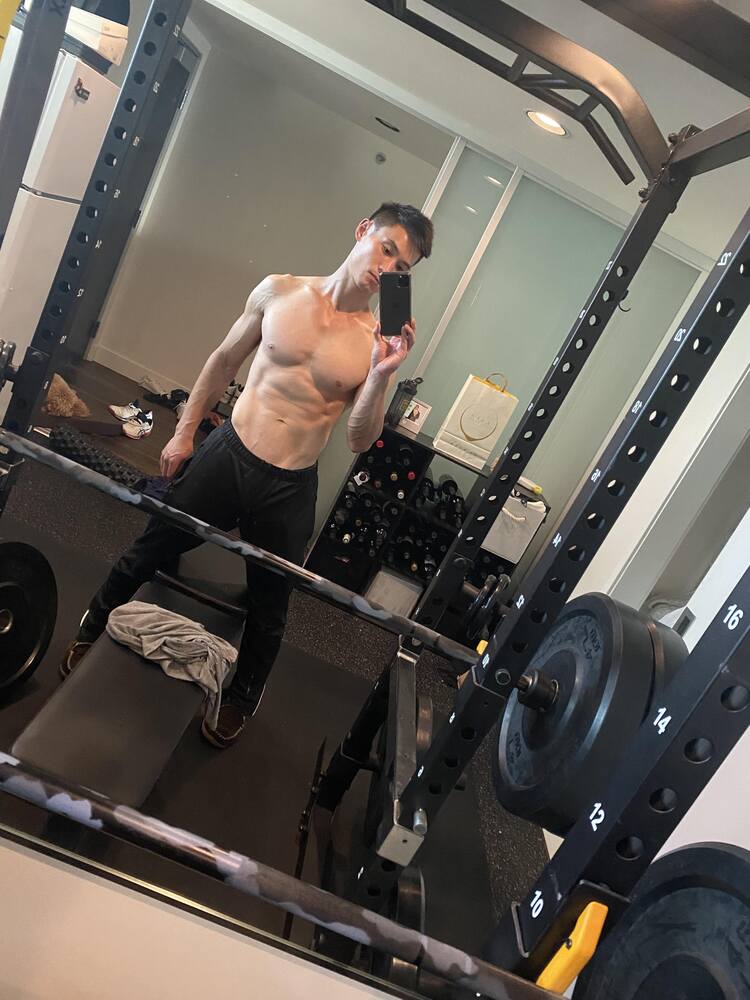
Current strength
- Bench press - 225 lbs 6 reps
- Squat - 225 lbs 5 reps
- Deadlift - 335 lbs 1 rep
Current Dexa
- Link
- 11% body fat total
- 7% abdominal body fat
- 99%th bone density (Z score 4.8)
Can you get big and strong with just push-ups?
So i was chatting in a group thread with my brother and a couple others today, and my brother gave me a big W.
Tim Wu:
ray has inspired me to do pushups
gonna do after i walk hopper
started with 10 on monday, 11 on tuesday
Ray Wu:
❤️ ❤️ ❤️
Tim Wu:
+1 every day
taking bets on how far i get
Ray Wu:
50 at least
Tim Wu:
generous, im already sore
Background
See, my brother Tim, does not like strength training. However, we know how important strength training is for how you look, your bone strength, and longevity.
Thus I was very happy he got started.
However, sore after 11 pushups? Does this mean it's working? Why do your muscles get sore anyways?
There are 1000 articles online about why you get sore, and how to prevent, but they all seemed not trustworthy.
Thus, i looked up the actual science from pubmed, and this is what I found..
Findings
Soreness is from what is called delayed onset muscle soreness (DOMS). It is particularly caused by the "down" or "lengthening" part of the exercise (eccentric part).
DOMS happens bc of microtears (damage) to your muscles that you are working, and the subsequent inflammatory response.
It is most likely NOT bc of lactic acid (lactic acid is gone within one hour of workout).
Working your muscles, even from 11 pushups, causes muscle growth from the micotears and inflammatory response, as well as increases in anabolic (muscle growing) hormone release, and myogenic pathways (metabolic pathways that cause muscle growth, such as activation of mTOR).
Therefore, soreness is a good sign. It means your muscles were stressed (and torn) and will be repaired to be stronger.
Does this mean doing 11 pushups a day will help you get huge?
No. You need "progressive load" to continually increase stress on muscles, and thus strength and muscle growth. This can come from weight or reps or any other way to stress muscles progressively.
Will doing one extra pushup a day do it?
I think actually yes. Theoretically if you do this for a year, increasing 1 a day, you'll get to 365+11=376 pushups in a row. IF you do that, i'm pretty sure you are stronger and muscles will be bigger.
Indeed, a recent study showed that increasing reps with a constant load was slightly better than increasing weight while keeping the same number of reps for increasing muscle size over 8 weeks.
Do you have to be sore to increase strength and grow muscle?
Online says no, but i think it might actually be yes. Only makes sense. Progress is necessary either way.
Interesting related fact - the best way to reduce soreness seems to be to exercise again.
What is the takeaway?
You must stress your muscles, and a little soreness is good. Too much is probably bad, bc it means you will have too much pain, and not want to continue. Progressive load to continually be "a little" sore is key to both strength and muscle growth.
I'm now curious how far doing just body weight exercises, while progressively increasing reps, can increase both strength and muscle size...
In any case, I'm convinced doing push-ups alone is a good thing. Good job Tim. Keep it up.
Citations
Plotkin D, Coleman M, Van Every D, Maldonado J, Oberlin D, Israetel M, Feather J, Alto A, Vigotsky AD, Schoenfeld BJ. Progressive overload without progressing load? The effects of load or repetition progression on muscular adaptations. PeerJ. 2022 Sep 30;10:e14142. doi: 10.7717/peerj.14142. PMID: 36199287; PMCID: PMC9528903.
Hotfiel T, Freiwald J, Hoppe MW, Lutter C, Forst R, Grim C, Bloch W, Hüttel M, Heiss R. Advances in Delayed-Onset Muscle Soreness (DOMS): Part I: Pathogenesis and Diagnostics. Sportverletz Sportschaden. 2018 Dec;32(4):243-250. English. doi: 10.1055/a-0753-1884. Epub 2018 Dec 11. PMID: 30537791.
Schoenfeld, Brad J. The Mechanisms of Muscle Hypertrophy and Their Application to Resistance Training. Journal of Strength and Conditioning Research 24(10):p 2857-2872, October 2010. | DOI: 10.1519/JSC.0b013e3181e840f3
Cheung K, Hume P, Maxwell L. Delayed onset muscle soreness : treatment strategies and performance factors. Sports Med. 2003;33(2):145-64. doi: 10.2165/00007256-200333020-00005. PMID: 12617692.
Obvious exercise
Summary facts
- Resistance training builds muscle and strength - you should do it
- Cardio improves metabolic health - you should do it
- HIgh intensity training improves VO2 max, which is a predictor of longevity - you should do it
Ray's Take
Exercising is the best thing you can do for your health. Period.
Strength, VO2 max, and cardio each have separate benefits. You should do all of them.
Here is an obvious way to get started.
1 - Strength
Everyone agrees
- Resistance training aka lifting weights is the best way to build strength, muscle, and bone density.
- Compound exercises (those that use multiple large muscle groups) are the best, overall.
- You have to progressively increase weight (or reps) to keep getting benefit.
People argue
- How many reps per set
- How many time you have to work out per week
- Which exact exercises are the best
RW OBVIOUS take
- Everyone should strength train. No excuses.
- You should have a simple program. This means, pick 4-6 core compound exercises, and do them consistently. Consistency aka not quitting is more important than having "the perfect program."
- Write down what you do, and beat it next time you do the same exercise. One extra rep, one extra set, one extra lb, or a shorter time between sets all work.
- If you want to do extra isolated exercises (abs, bicep curls, chest fly, etc), you should. This should be viewed as "fun" accessory work which is effective especially if you want to get bigger (just less efficient).
- What you do and how you start depends on your personal preferences (what are your goals? how much time do you have? what equipment do you have access to? what is your starting point?). Here is an article focused on how to build muscle.
Core compound exercises
- Squat (bar) *Best
- Deadlift (bar) *Best
- Bench (bar) *Best
- Pull-ups *Very good
- Chest press (dumbbell) *Very good
- Incline chest press (dumbbell) *Very good
- Chest press (machine)
- Shoulder press (dumbbell)*Very good
- Single handed or double handed rows (dumbbell) *Very good
- Lat pull down (machine) *Very good
- Seated row (machine)
- Squats (dumbbell) *Very good
- Lunges (dumbbells) *Very good
- Thruster (dumbbells) *Very good
Volume
- Choose 4-6 of above.
- Do 5 sets each per week.
- Example: 5 sets of bench press, 5 sets of squat, 5 sets of deadlift, 5 sets of pullups. Can do this in two workouts. One day is bench and deadlift. The other is squat and pull-ups.
- If you want to build muscle, make sure to hit at least 10 sets total per muscle group (IE 5 sets of bench, 5 sets of incline bench for chest).
Repetitions per set
- If you are optimizing for strength do sets of 5 reps.
- If you are optimizing for muscle growth, do sets of 8-12 reps.
- If you don't know, just do sets of 10 reps.
- Example: Do 5 sets of 10 repetitions of bench press. Use the same weight every time. Write down the weight you used. Increase it next time.
Effort
- Make sure you know the right technique.
**RPE stands for rate of perceived exertion. RPE 7 means you could have done 3 more reps with perfect form. RPE 9 means you could do 1 more rep. RPE 10 is all out max. *RPE as defined here also referred to as RIR - reps left in reserve.
- Start with RPE 7 or 8 on work sets (sets that count. you always need to warm up with light weights before work sets). No need to get to RPE 9 or 10 until you are more comfortable.
Time in between sets
- Your choice.
- There is evidence shorter rest results in higher metabolic stress for muscles and lead to more muscle growth. However, to maximize strength, longer rest periods could be better.
- If you don't know, just start with 2 min between each set.
What this looks like
- Someone who goes to gym 2x a week: Two 45 min sessions per week. Each session does 5 sets of two core lifts. The rest of the time can be doing accessory work (anything you want to build a particular muscle such as chest fly or incline press for chest).
- Someone who goes to the gym 4x a week: Four 45 min sessions per week. I would choose 6 exercises and do bench, dead, and squat 1-2x a week each. Doing these more than 1-2x a week can make it hard to make progress.
- Someone who goes to gym 1x a week: Do everything in one day. Choose 4 exercises. 5 sets each.
- Someone who does at home workouts and has equipment: It's your world
- Someone who has no equipment at all: You can start with push-ups and air squats. I'd recommend getting TRX or adjustable dumbbells.
If you still don't know what to do
- Go to the gym 2x per week.
- Day 1: Bench press 5 sets of 10 (RPE7). Deadlifts 5 sets of 10 (RPE7).
- Day 2: Squat 5 sets of 10 (RPE7). Lat pulldown 5 sets of 10 (RPE7).
- Make sure to warm up before every work set.
- Make sure to write down numbers for every workout.
- Make sure to progress every single workout.
2 - Cardio
Everyone agrees
- Cardio is good for your cardiovascular system and metabolic health
- Cardio burns calories
People argue
- How much do you need?
- Does cardio burn muscle?
- Should you do cardio for the calorie burn?
RW OBVIOUS take
- Cardio is good for you and anyone can do it. The more you do, the better for your metabolic health.
- Don't do cardio just for aesthetics. Strength and nutrition are more effective for looking better.
- Doing cardio for calorie burn is tricky. Yes, it burns cals, but you are also more likely to be hungry and over eat after cardio (big mistake).
What this looks like
- Choose any exercise you like (jogging, biking, swimming, jogging, sports).
- Do that activity, at the highest effort you can, while still being able to talk to a friend. You can also measure your heart rate, and get into "zone 2" aka 60% of your max heart rate (which is 220-your age).
- Do it for at least 2 hours a week (split it up any way you like).
- The major key for cardio is making it enjoyable and convenient. If you can do a work call, listen to a podcast, or something else to make it efficient, thats great. If you can play a sport (tennis, soccer, basketball, golf, etc.), measure your heart rate with an apple watch while doing it. If its 60% of your max, congrats - it counts.
3 - High intensity aka VO2 max training
Everyone agrees
- Higher VO2 max is better than lower
People argue
- How important VO2 max actually is
RW OBVIOUS take
- Higher VO2 max is associated with lower risk of dying.
- However, training VO2 max is painful.
- If you don't like pushing yourself to the max, you probably won't train VO2 max.
- I probably shouldn't write this, but most people just won't do VO2 max. It's too painful. You should do it, if you can. It takes no equipment, and 1x per week is enough.
What this looks like
- Choose any exercise you like (running, biking, swimming, rower).
- Your goal is to get your heart rate to 90-100% of your maximum heart rate (220-your age).
- Do that activity, at the highest effort you can, for 30 sec to 5 min. Fully recover with a long break. Repeat 4-5x.
- Studies say the biggest improvement will come from if your highest effort is sustained over 4-5 minutes with a 4-5 min break. However, if you would rather all out sprint for 30 seconds, that works too (this is what I do).
- You only have to do this 1x per week.
Putting it together
RW OBVIOUS take
- Do strength training (20+ sets a week)
- Do cardio (2+ hours a week)
- Do VO2 max (1x a week)
You can do all of this in 4 hours a week. That's a tiny investment compared to the crazy health benefits you will get.
The key is to make your program sustainable.
- Think constantly about the benefits (exercise is the most powerful drug)
- Maximize your enjoyment (by making progress, listening to pod, etc.)
- Minimize annoyance (do what you can at home)
- Minimize pain (push yourself, but don't kill yourself. Slow and steady is the key).
Action item
RW OBVIOUS take
- Exercise
- Track every workout on your My Program stream
Bonus
- If you do not know how to lift weights, learn by watching videos. Then video yourself. This is really effective and underutilized.
Mashed Cauliflower - your new favorite side
Ray's Take
Mashed cauli - can it really be better than mashed potatoes?
YES
But is it healthy too?
YES
Not only is mashed cauli tastier than mashed potatoes, it's WAY healthier.
Win. Win.
Who I am
I'm Ray, a doctor that is obsessed with making food taste way better than any restaurant, while being 10x healthier.
I increase the value of what you eat.
Mashed cauli
Whenever I eat anything, I'm always making a "value" calculation. The value comes from taste and knowing if its healthy.
I'm optimizing for both.
Mashed cauli auto hits both criteria. It has 1/4 the calories, and 1/8 the net carbs of mashed potatoes. It also makes you insanely full. (Not sure why. No research theories or good answers from gpt4).
In any case, mashed cauli goes perfect with steak (or chicken or any other meat), is low cal, and easy to make.
----->lfg.
So for steak, I want it to be tender, juicy, and delicious, while not having too much fat or cals. Remember:
This is insanely good value (taste and health).
My workflow:
- Buy cauli at trader joe's or anywhere they charge per each (not per lb).
Note - I do go to the store, and choose based on...biggest and heaviest ones. I'm a value player, and you should be too :)
boil water in a large pot (i use a water heater to boil the water first)
roughly chop the cauli. I just quarter it.
throw the cauli into the boiling water (make sure there is enough water to completely cover the cauli) and cover.
wait for the water to get to boil, and turn down the heat so its a simmer.
simmer for 10-15 min, or until the cauli is smashable with tongs (or a fork).
strain the cauli.
place the cauli in a large bowl, ceramic container, or any other vessel that can go into an oven.
use a hand blender to blend the cauli. It should be smooth-ish but can have chunks.
add your spice mix (mine is garlic powder and salt) to taste, optionally black pepper, red pepper flake, parmesan cheese, and fish sauce (just a little, highly recommended). Mix
Put in oven (doesn't really matter the temp or the time). The goal is to evaporate some water and get a crust on top.
Check it periodically but its pretty much ready to go no matter what after 10-15 min. I sometimes leave mine in for an hour (this makes it thicker).
Serving
I love mashed cauli with steak, pork chop, or chicken IE everything.
It's awesome bc its a side and a sauce at the same time....while being low calorie.
---> Super high value.
This makes me so happy :)
Nerd knowledge
Here is a breakdown of mashed cauli vs mashed potatoes.
| Food | Net Carbs (g/100g) | Calories (kcal/100g) |
|---|---|---|
| Mashed Cauliflower (with spices, fish sauce) | 5-7 | 30-40 |
| Mashed Cauliflower with 1 tsp Parmesan Cheese | 5-7 | 35-45 |
| Mashed Potatoes (with spices, only) | 17-20 | 90-100 |
| Mashed Potatoes with Cream and Butter | 17-20 | 150 or more |
Mashed cauli - no brainer..
Of note, mashed cauli has a bit more calories than regular cauliflower bc after you cook it, some of the water evaporates. Thus its more dense.
Mashed potatoes can have up to 400 calories per 100g, depending on how much butter is added. Butter, oil, and cream is the easiest way to add a ton of calories if you're not careful (or if you don't know what's in it).
For example, Cheesecake Factory's mashed potatoes has 450 calories, 25g fat in just one serving! We could eat over 2 lbs of our mashed cauli and have less calories!
How to decide if you should eat carbs // Veggies vs whole grains
Ray's take
Yes. You should eat carbs.
Every single person should eat a lot of veggies. And veggies have carbs. They also have fiber, which is really important for gut health and health in general.
The question is if you should eat whole grains and starchy vegetables (IE potatoes). Let's dig in.
Who I am
I'm Ray, a doctor that is obsessed with making food tastier than any restaurant, while being 10x healthier.
Value of food
Recap: Rather than just considering taste, you should eat foods that are high in value, meaning they taste amazing and are healthy. Macros and nutrients matter, but the simplest way to assess value is with calories.
| Food Taste | Calories Level | Action |
|---|---|---|
| Amazing | Low | Eat a lot |
| Amazing | Medium | Eat some |
| Amazing | High | Be careful |
| Ok | Low | Your choice |
| Ok | Medium or High | AVOID |
So given this framework, how do we decide if we eat whole grains or not?
Value analysis
Calories
Its clear that veggies and low-carb replacements have way less calories than the same volume of whole grains and starchy vegetables:
| Veggie or Low-Carb Option | Whole Grain or Starch | Comparison |
|---|---|---|
| Cauliflower | Potato | Cauliflower has 1/3 the calories |
| Cauliflower Rice | Brown Rice or Quinoa | Cauliflower Rice has ~1/4 the calories |
| Mushrooms, Asparagus, Zucchini | - | Even lower calories than cauliflower |
| Keto Bread | Whole Wheat Bread | Keto Bread has 1/2 the calories |
| Shirataki Noodles | Whole Wheat Pasta | Shirataki Noodles have ~1/9 the calories |
| Low Carb Tortillas | Corn or Whole Wheat Tortillas | Low Carb Tortillas have ~1/2 the calories |
| Lupini Beans, Black Soybeans | Normal Beans | About the same calories |
Veggies and low-carb replacements have 1/2 the calories (or less) vs whole grains from calorie perspective.
Full nutritional info included in below section
Taste
This one is up to you.
Here is my personal opinion:
| Veggie or Low-Carb Replacement | Whole Grain or Starch | My Opinion |
|---|---|---|
| Cauliflower | Potatoes | I like the taste of cauliflower more than potatoes, if cooked correctly. |
| Cauliflower Rice | Normal Rice | I think cauliflower rice and normal rice are about the same. |
| Low Carb Tortilla | Regular Tortillas | Low carb tortilla is the same as regular tortillas. |
| Shirataki Noodles | Regular Noodles | Shirataki noodles are worse than regular noodles, but I know how to make them taste really good. |
| Keto Bread | Regular Bread | Keto bread is worse than regular bread, but it's decent, toasted. |
Due to my taste, skill in cooking replacements, and the calorie info, I only eat veggies and low-carb replacements. Eating only those maximizes my food value.
What you do is up to you. Is the traditional version 2x as good? (I'd not judge until you learn how to make the lower cal version the way I'll teach you).
If yes, then your value calculation would say you should eat some more whole grains.
If not then you shouldn't.
An alternative strategy is to just eat half as much of the whole grain version.
There isn't definitive scientific evidence that low-carb or low-fat is better for long term weight control, so you should pick what's right for you.
Just know calories matter in any case.
Beyond calories - net carbs, glycemic index and glycemic load
I included net carbs, glycemic index ,and glycemic load in the nutritional info (below).
Net carbs are carbs - fiber. Your body can't digest fiber easily so it "doesn't count." Fiber is very good for you.
Glycemic index is how much the food increases your blood sugar, with 100 being pure sugar (a lot) and 0 being not at all.
Glycemic load is how much that food actually increases your blood sugar based on net carbs from 100g (above 20 is high, 10-19 medium, less than 10 is low).
Glycemic load = (Glycemic index * net carbohydrates per serving) divided by 100
Note - use glycemic load as a general guide. Not a specific number.
Glycemic load values vary widely on the internet. It's bc Glycemic index also varies widely based on the exact item, how its prepared, and infinite other forms of variability.
Almost every researcher, nutritionist, person with a brain would say that low glycemic load foods (under 10) are better. They cause your blood sugar to go up less, which means less insulin, which means less diabetes (and better metabolic health).
Just take a look yourself at the glycemic load of veggies and low-carb replacements.It's basically 0, meaning they do not raise your blood sugar, at all.
Veggies do not raise your blood sugar at all.
The glycemic loads of whole grains are much higher than veggies. Refined carbs are even worse.
Nutrition info
Veggies and low-carb alternatives:
| Fiber Source | Serving Size | Calories | Fat (g) | Protein (g) | Carbs (g) | Fiber (g) | Net Carbs (g) | Glycemic Index | Glycemic Load |
|---|---|---|---|---|---|---|---|---|---|
| Broccoli | 1/2 lb (227g) | 76 | 0.8 | 6.4 | 15.1 | 6.3 | 8.8 | 10 | 1 |
| Cauliflower | 1/2 lb (227g) | 57 | 0.7 | 5.3 | 13.0 | 5.0 | 6.81 | 10 | 1 |
| Cauliflower Rice | 1/2 lb (227g) | 47 | 0.5 | 4.0 | 10.0 | 5.0 | 5.0 | 10 | 1 |
| Spaghetti Squash | 1/2 lb (227g) | 42 | 0.4 | 1.0 | 10.0 | 2.2 | 7.8 | 20 | 2 |
| Mushrooms | 1/2 lb (227g) | 44 | 0.7 | 6.2 | 6.8 | 2.0 | 4.8 | 10 | 1 |
| Asparagus | 1/2 lb (227g) | 45 | 0.5 | 4.9 | 8.9 | 4.1 | 4.8 | 15 | 1 |
| Zucchini | 1/2 lb (227g) | 33 | 0.6 | 2.4 | 6.1 | 2.3 | 3.8 | 15 | 1 |
| Shirataki Noodles | 1 pack (200g) | 20 | 0.5 | 1.0 | 4.0 | 4.0 | 0 | 0 | 0 |
| Mission Low Carb Tortillas | 1 tortilla (43g) | 70 | 3.5 | 6.0 | 19 | 17 | 2.0 | low | low |
| Keto Bread (Franz/Artisan) | 2 slices (56g) | 70 | 2 | 3 | 11 | 10 | 1.0 | low | low |
Whole grains and starchy vegetables:
| Fiber Source | Serving Size | Calories | Fat (g) | Protein (g) | Carbs (g) | Fiber (g) | Net Carbs (g) | Glycemic Index | Glycemic Load |
|---|---|---|---|---|---|---|---|---|---|
| Sweet Potatoes | 1/2 lb (227g) | 180 | 0.3 | 4.0 | 41.4 | 6.6 | 34.8 | 63 | 22 |
| Regular Potatoes | 1/2 lb (227g) | 163 | 0.2 | 4.3 | 37.2 | 4.7 | 32.5 | 78 | 25 |
| Brown Rice | 1 cup cooked (195g) | 216 | 1.8 | 5.0 | 44.8 | 3.5 | 41.3 | 55 | 23 |
| Quinoa | 1 cup cooked (185g) | 222 | 3.6 | 8.1 | 39.4 | 5.2 | 34.2 | 53 | 21 |
| Farro | 1 cup cooked (174g) | 220 | 1.5 | 8.0 | 47.0 | 11.0 | 36.0 | 40 (est.) | 19 |
| Barley | 1 cup cooked (157g) | 193 | 0.7 | 3.6 | 44.3 | 6.0 | 38.3 | 28 | 12 |
| Whole Wheat Bread | 2 slices (60g) | 138 | 2.0 | 6.0 | 24.0 | 4.0 | 20.0 | 69 | 17 |
| Whole Wheat Pasta | 1 cup cooked (140g) | 174 | 0.8 | 7.5 | 37.2 | 6.3 | 30.9 | 58 | 18 |
| Corn Tortilla | 1 medium (45g) | 114 | 1.4 | 2.8 | 23.8 | 3.6 | 20.2 | 52 | 12 |
| Whole Wheat Tortilla | 1 medium (45g) | 130 | 3.0 | 4.0 | 22.0 | 3.0 | 19.0 | 30 | 8 |
| Oats (Old Fashioned) | 1/2 cup dry (40g) | 150 | 2.5 | 5.0 | 27.0 | 4.0 | 23.0 | 55 | 15 |
Legumes:
| Legume | Serving Size | Calories | Fat (g) | Protein (g) | Carbs (g) | Fiber (g) | Net Carbs (g) | Glycemic Index | Glycemic Load |
|---|---|---|---|---|---|---|---|---|---|
| Black Beans (canned) | 1/2 cup (130g) | 109 | 0.4 | 7.0 | 20.4 | 7.5 | 12.9 | 30 | 6 |
| Chickpeas (canned) | 1/2 cup (130g) | 135 | 2.7 | 7.3 | 22.5 | 6.2 | 16.3 | 30 | 7 |
| Pinto Beans (canned) | 1/2 cup (130g) | 122 | 0.5 | 8.0 | 22.0 | 7.7 | 14.3 | 45 | 10 |
| Refried Beans (canned) | 1/2 cup (130g) | 118 | 2.5 | 7.5 | 20.0 | 6.0 | 14.0 | 38 | 8 |
| Lupini Beans (Brami) | 1/2 cup (approx. 120g) | 100 | 0.5 | 13.1 | 8.5 | 8.0 | 0.5 | 32 | <1 |
| Black Soybeans | 1/2 cup (approx. 120g) | 120 | 6.0 | 11.0 | 8.0 | 4.0 | 4.0 | 15 | 1 |
Refined Carbs:
| Refined Carbohydrate | Serving Size | Calories | Fat (g) | Protein (g) | Carbs (g) | Fiber (g) | Net Carbs (g) | Glycemic Index | Glycemic Load |
|---|---|---|---|---|---|---|---|---|---|
| White Rice | 1 cup (cooked, 158g) | 205 | 0.4 | 4.3 | 44.5 | 0.6 | 43.9 | 73 | 32 |
| Ramen | 1 package (91g) | 375 | 14.5 | 9.7 | 51.9 | 2.0 | 49.9 | 55 | 28 |
| Asian Noodles | 1 cup (cooked, 124g) | 220 | 3.3 | 7.3 | 40.3 | 1.9 | 38.4 | 45 | 20 |
| Pasta | 1 cup (cooked, 124g) | 220 | 1.3 | 8.1 | 42.9 | 2.5 | 40.4 | 55 | 23 |
| White Bread | 2 slices (56g) | 150 | 1.8 | 4.4 | 28.6 | 1.6 | 27.0 | 75 | 20 |
| Sourdough Bread | 2 slices (56g) | 140 | 1.0 | 5.4 | 27.6 | 1.2 | 26.4 | 68 | 18 |
| Brioche | 2 slices (56g) | 180 | 9.0 | 4.0 | 22.0 | 1.0 | 21.0 | 70 | 16 |
| Flour Tortilla | 1 medium (45g) | 155 | 4.0 | 4.0 | 25.5 | 1.9 | 23.6 | 70 | 17 |
| Potato Chips | 50g | 310 | 21.0 | 4.0 | 27.8 | 2.4 | 25.4 | 55 | 24 |
| Corn Tortilla Chips | 50g | 276 | 13.4 | 4.0 | 37.0 | 3.0 | 34.0 | 63 | 22 |
Refined carbs have even higher glycemic load. An interesting note is that the calories from these foods aren't necessarily higher than the whole grain version. However, the negative effect probably comes in part to the high impact on blood sugar, insulin, and other hormones...
More on this in the future.
Is a calorie a calorie? Primer on protein, carbohydrate, fat metabolism and energy balance
Ray's Take
Is a calorie a calorie? No
Does calories in calories out matter? Yes
Who I am
I'm Ray, a doctor that is obsessed with making food taste way better than any restaurant, while being as healthy as possible.
Lets start with a quick review
| Nutrient Category | % of calories used for digestion | Insulin Response | Key Characteristics |
|---|---|---|---|
| Protein | 20-30% | Low | - Can be turned into muscle - Not stored as energy - Not converted to fat easily - Makes you feel full |
| Fat | 0-3% | Minimal | - Dense source of energy - Easily stored as fat |
| Carbs from whole foods (veggies) | 5-10% | Low | - Delays absorption of simple carbs bc of fiber - Feeds microbiome - Very low calorie density - Makes you feel full |
| Refined carbs | ~5% | High | - Easily stored as glycogen - Easily converted to and stored as fat/triglycerides - Makes you feel hungry (leptin resistance) - Leads to insulin resistance and fat storage |
Nerd knowledge
What actually happens when you eat protein, fat, and carbs? What's the difference?
Protein
We outlined protein metabolism here, but the TLDR is that when you eat protein, a couple things can happen:
- used to build and repair muscle
- used for enzymes, hormones, antibodies, DNA
- oxidized for immediate energy (not direct)
- turned into glucose aka gluconeogensis (only happens when carbs low)
- very rarely turned into fat. This is bc it takes many steps to turn amino acids into acetyl-coA, which is the starting point for de novo lipogenesis
Protein is good bc it builds muscles, is used for essential functions, and is difficult for body to turn into fat
Carbs
When carbs are ingested (i'm not talking about fiber), they are broken down into simple sugars and enter the bloodstream. Here is what can come of them:
- efficiently turned into energy (ATP) via glycolysis, TCA / krebs cycle, and electron transport chain
- turned into glycogen (stored form of glucose in liver, muscle) via glycogenesis.
- turned into triglycerides, the main form of fat storage in the body, via de novo lipogenesis. This happens when insulin is high, and there is excess glucose and glycogen around (IE when you eat more calories than you burn). Fat is stored in adipocytes (fat cells), but too much leads to it being stored in liver and in muscle, this is bad (IE NAFLD/NASH in liver, HFpEF in heart, and fat in muscles are bad)
Carbohydrates are good for fast energy, but too much (IE when calories in are higher than calories out) in the presence of high insulin can easily turn into fat.
Fiber (IE from veggies)
Fiber is non-digestible carbs, usually from whole veggies. There are two kinds - soluble and insoluble. Here is what comes happens when you eat it:
- Insoluble fiber forms a stringy net. The soluble fiber turns into a gel that covers the holes in the net.
- This gel filled net starts getting formed in the first part of the intestines (duodenum), which prevents the duodenum from absorbing simple carbs (sugar). This is good bc it dampens the sugar that goes into blood stream (which reduces insulin response) and also limits the amount of sugar that goes to the liver (which can get turned into fat).
- The carbs you eat travel further in your intestine, and feed the microbiome.
- The microbiome also can feed on soluble fiber and turn it into short chain fatty acids.
- Short chain fatty acids improve insulin sensitivity, gut health, and also signal Peptide YY and GLP-1 (yes the same as the drug target) which make us feel full.
Fiber is good for gut health, feeling full, and just have a lot of benefits.
Fat
When fat is ingested, they are broken down into triglycerides, absorbed by small intestine, and transported within chylomicrons. Here is what can come of them:
- turned into acetyl-coA which is turned into energy (ATP) via beta-oxidation in mitochondria of cells. It is a dense source of energy.
- transported to adipose tissue (fat tissue), and stored as triglycerides within the fat cells.
- when carbs are low, can be turned into ketones by the liver. The ketones can be used as energy when glucose is low.
Fat provides a dense source of energy, but the body uses glucose first bc it is faster compared to beta-oxidation. If you have more calories in, than out, you will store eaten fat as fat. Keep in mind some fat is necessary for hormones and digestion.
Adding it up
You're going to eat protein, carbs and fat.
Protein tastes good, is filling, and is the only macro that contributes directly to muscle growth. It is not easy to turn into fat.
Carbs taste good, are not really filling, and if you eat more cals than you burn, will turn into fat (due to insulin being high, and de novo lipogenesis being efficient/easy).
Fiber from veggies is low calorie and has a lot of benefits.
Fat tastes good, is filling, has no insulin response, but if you eat more cals than you burn, will be easily stored as fat.
Therefore
What are good calories?
- Protein (always good)
- Carbs (from veggies)
- Fat (unsaturated fat from olive oil, avocados, fish best)
Get these from whole, unprocessed, foods.
What are bad calories?
- simple carbs which turn into sugar in your bloodstream
Avoid these from refined carbs (bread, rice, pasta, chips, crackers) and and foods with added sugar (candy, ice cream).
So is a calorie a calorie?
No.
However, that doesn't mean that to lose weight (and fat) you don't have to eat less calories than you burn.
If you eat the worst types of calories (refined carbs), but only 1000 calories a day, you'll lose weight. However, you'll be extremely hungry so please do not try this. 100% chance it doesn't work.
Interesting case study: High fructose corn syrup
Big food cos that used high fructose corn syrup wanted to prove a calorie was a calorie, and put two groups of people on the same number of calories. Half got fructose, the other half did not.
They found that there was no weight difference after 3 months. Thus they were telling everyone that a calorie is a calorie and fructose is good.
However, what they didn't mention is that the people eating fructose, were extremely hungry (due to leptin resistance. Leptin is hormone that makes you feel full). So in real life they would have ate more (more calories), and gained more weight. Also, their insulin levels were way higher, so they were literally developing diabetes.
This case study shows how calorie in calorie out still matters, but a calorie is def not a calorie.
Calorie in, calorie out still matters
If you eat good calories, can you just not care about calories at all?
No, if you want to lose weight (or not gain weight), you still need to eat less calories than you burn. Overeating calories from any source (protein, carb, fat) will cause you to gain weight (and fat).
First law of thermodynamics: Energy cannot be created or destroyed. It can only be transferred.
For humans, this means we intake energy from food and drink. And we use calories from our basal metabolic activity (breathing, heart beat, etc), the thermic energy of food (digesting), and active calories (exercising).
Those are the inputs and the outputs, and energy cannot be created or destroyed. This means too many calories will be stored in our body, usually as fat.
Why does this matter?
It matters bc the goal is to find a nutrition program that you can do every day for a long time, where you are actually eating less calories than you burn (or the same amount if you are maintaining).
We call this sustainability, and it is the most important factor of any eating program.
What does sustainability mean?
- Love what you eat
- Do not feel like you are missing out on anything
- Making progress toward your objective
The best way to do this for me is max volume, min calories.
What is max volume min calories eating philosophy?
- Eat as much as you want for foods that are are high volume, low calories
- Eat good quality, delicious higher calorie foods, but don't overeat
- On all other foods aka "bad" foods, be knowledgeable, and actively decide if its worth it (i.e. I drink beer)
By doing this, you will automatically eat good calories and eliminate bad and reach sustainability. At this point, if you just wait (and don't change anything), you're guaranteed to reach your goal.
How to build muscle and lose fat at the same time
TLDR
- The best way to build muscle and lose fat at the same time is by strength training, and eating a ton of protein (while not increasing carbs and fat)
- You have to lift weights to stimulate muscle growth (obvious)
- Protein is necessary for muscle growth (obvious)
- Protein is not easily stored as fat (really cool. this article explains how/why
- I'd aim for at least 1g of protein per lb per day while not increasing carbs and fat if you want to recomp (grow muscle and lose fat)
Ray's Take
Everyone wants to build muscle and lose fat at the same time.
"I’m pretty close to maintenance weight, but want a good amount more muscle."
This is the dream. Staying the same weight, but adding muscle.
For this to happen, you need to add muscle weight, and lose fat weight. This is called recomp, and its not easy.
Why is it not easy?
Your body is typically in an anabolic state (building) or catabolic (breaking down). This shifts back and forth all the time. However, when your body is building, its usually building muscle AND fat, both. This is why you hear lots of people saying that they are "bulking" and will "lean down" after.
- NOTE - this almost never works unless you really know what you're doing. Would not recommend for normal people like you.
So is it possible?
I think the answer is yes. And the solution is pretty simple:
- Lift heavy (required to activate muscle building)
- Eat a lot of protein (way more than you think)
- Don't eat extra carbs and fat (too much here will turn into fat).
We've talked about how/why strength training grows muscle so wont' repeat details here. TLDR you need to lift weights to activate metabolic processes and hormones to grow.
Lets talk about protein.
What happens after you eat that bite of chicken breast?
Well first, its broken down into amino acids (full process in sections below), but the main takeaway is that unlike carbs and fat, protein itself cannot be stored as energy. It is also very difficult to turn protein into fat.
So what happens to amino acids?
- oxidized and used immediately to create energy (ATP)
- turned into enzymes, hormones, antibodies, DNA
- TURNED INTO MUSCLE
**Sure, protein can be converted into ATP or glucose through less preferred, energy-intensive processes, but that's not what the body prefers bc carbs and fat are better for that. It's very difficult for protein to be converted to fat (see below nerd sections for details).
Therefore, a simple answer to building muscle while not gaining weight is lifting heavy and eating a ton of protein. You have to keep carbs and fat low though, bc these will turn into fat.
High protein, lower carbs/ fats is your best shot. You're maximizing muscle-building potential while keeping fat storage low.
How much protein should you eat?
For those on a strength program, aim for 1g of protein per lb per day to fuel muscle growth (and preserve lean muscle)
Not lifting?
Well you won't really gain muscle without lifting, but 0.75g per lb can still help you lose fat while preserving as much muscle as possible. (You should be on a strength program).
How much is too much
Worried about too much protein?
If you are healthy and don't have a kidney issue, don't be. This comprehensive review concluded that:
While protein restriction may be appropriate for treatment of existing kidney disease, we find no significant evidence for a detrimental effect of high protein intakes on kidney function in healthy persons after centuries of a high protein Western diet.
The review outlines that there has not been a study where too much protein resulted in kidney damage, in healthy adults.
They also looked at animal studies in which rats and dogs were given diets up to 60% protein. No kidney damage was found.
For context:
- I'm 150 lbs
- I eat 2400 calories a day
- 60% of 2400 is 1440 calories
- (1440 calories) / (4 calories per gram of protein) = 360g protein
- 360g / 150 lbs = 2.4g protein per day
Thus eating 1g-1.5g protein per lb should be totally safe.
Stupid Ideas
More protein equals more fat storage
Wrong. Protein is the least likely macronutrient to be stored as fat due to its complex metabolic pathways. It's primarily used for growth and repair, not for filling up your fat cells.
Eating protein alone is enough for muscle growth
Not quite. Without sufficient exercise, especially resistance training, even high protein intake won't magically translate into muscle. The stimulus must come first; protein is there to support the response.
All proteins are created equal
Nope. The quality of protein, particularly its amino acid profile, matters immensely. Complete proteins, like those from animal sources, provide all 9 essential amino acids in one go, unlike many plant proteins. Essential amino acids are critical bc our body can't make them, and they are necessary for key metabolic processes.
Cool Knowledge for Normal People
Ever wondered how a piece of chicken turns into muscle? Once ingested, protein is broken down into amino acids, which are then absorbed and transported to muscle tissues. Here, under the right conditions (think resistance training), these amino acids get to work, repairing microtears and building up the muscle stronger than before.
Amino acids can also be "turned into energy" (ATP) through the Krebs cycle. Interestingly, we don't really want this bc we'd rather use amino acids for muscle growth, but it happens.
Here are some more details for how protein actually turns into muscle.
Digestion
- Stomach: Proteins begin their journey in the stomach, where hydrochloric acid denatures protein structures, making them more accessible to enzymes. Pepsin, a digestive enzyme, then breaks these proteins down into shorter polypeptides.
- Small Intestine: As these polypeptides enter the small intestine, pancreatic enzymes like trypsin and chymotrypsin further cleave them into even smaller peptides and individual amino acids.
Absorption
- Enterocytes: In the small intestine's lining, specialized cells called enterocytes absorb amino acids and small peptides through active transport and facilitated diffusion.
- Bloodstream: Once inside the enterocytes, amino acids are released into the bloodstream, where they travel to the liver via the hepatic portal vein, a direct line to this central metabolic organ.
Muscle Protein Synthesis
- Activation: Amino acids in the bloodstream signal muscle cells to initiate protein synthesis, a process regulated by the mTOR pathway, a key player in cell growth and protein formation.
- Translation: Inside muscle cells, ribosomes read the genetic code (mRNA) that specifies the amino acid sequence of the new protein. Transfer RNA (tRNA) brings the corresponding amino acids to the ribosome, where they are linked together in a growing polypeptide chain, folding into a functional protein.
More Nerd Knowledge: Oxidation, gluconeogenesis and de novo lipogenesis
When you eat protein, all of it doesn't just turn into muscle. It can also be oxidized (used immediately to turn into ATP (energy), undergo gluconeogenesis (turned into glucose), or de novo lipogenesis (turned into fat. This is hard and rare, which is a great thing).
Oxidation
The oxidation of amino acids is a crucial metabolic process where proteins, once broken down into their constituent amino acids, can be utilized for energy production. This pathway becomes particularly significant when carbohydrates are scarce or during periods of increased energy demand, such as intense physical activity or fasting.
Although not the body's first choice for energy (using carbohydrates and fats is more efficient and direct pathway to ATP production), amino acids can undergo deamination, removing their nitrogen-containing groups, which then allows the remaining carbon skeletons to enter the citric acid cycle where ATP is produced.
Gluconeogenesis
Gluconeogenesis is a metabolic pathway that shows the body's adaptability to various dietary conditions, ensuring glucose availability during carbohydrate scarcity. This process turns amino acids (and other substrates) into glucose, and is especially critical during fasting, low-carbohydrate diets, or intense exercise.
Gluconeogenesis primarily occurs in the liver, but the kidneys also contribute, especially during prolonged fasting or more severe carbohydrate restriction.
Process
- Amino Acid Conversion: Amino acids derived from dietary protein or muscle protein breakdown are transported to the liver. Here, enzymes remove their amino groups in a process called transamination or deamination, converting them into ketoacids.
- Gluconeogenic Substrates: These ketoacids are then transformed into gluconeogenic intermediates like pyruvate, oxaloacetate, and dihydroxyacetone phosphate. Through a series of enzymatically catalyzed reactions, these intermediates are eventually converted into glucose.
- Energy Cost: Gluconeogenesis is an energetically demanding process, requiring ATP. This underscores the body's commitment to maintaining glucose levels, essential for brain function, red blood cells, and other glucose-dependent tissues.
Glucagon and cortisol are key hormones that stimulate gluconeogenesis, especially during fasting or stress. In contrast, insulin inhibits this pathway, reflecting its role in lowering blood glucose levels post-meal.
De novo lipogenesis (Protein -> Fat?)
While it's technically possible for protein to be converted into fat, this process is indirect and energy-intensive, making it a less preferred metabolic pathway. Proteins are primarily used for growth, repair, and maintenance of body tissues, and only under conditions of significant caloric excess might they contribute, albeit inefficiently, to fat storage.
In contrast, carbohydrates and fats are much more readily converted into fat through de novo lipogenesis (DNL), a metabolic process where excess dietary carbohydrates are transformed into fatty acids and stored as fat, primarily in the liver and adipose tissue. DNL is a key mechanism for energy storage, efficiently managing surplus calories from carbs and fats by converting them into a form that can be stored for future energy needs.
Protein's role in our bodies is nothing short of miraculous. From providing the essential building blocks of life to ensuring we have energy in times of need, it's a critical component of a healthy diet and an active lifestyle. So next time you enjoy your favorite protein-rich meal, take a moment to appreciate the complex, wonderfully efficient process that begins with that first bite.
Fiber
Ray's Take
Fiber is really cool.
What is fiber?
Non-digestible carbs (or difficult to digest).

They come from the cell wall of plants (pectins, mucilages, cellulose, hemicellulose, lignin are specific types of fiber)
There are two categories of fiber: soluble (can absorb water) and insoluble (stringy). Most veggies contain both.
Why is fiber cool?
It's cool bc it has metabolic benefits, and also obvious benefits.
What are the obvious benefits? (cool)
If you eat something (veggies) that is mostly water (90%+) and fiber (non-digestible), you are getting a high volume of food with very low calories (soluble fiber has 2 calories per gram. Insoluble has 0 cals). That's awesome bc it means you can eat as much veggies as you want. In fact the more you eat the better.
Fiber (bulk) and water also make you feel full. Obviously having more in your stomach will cause you to feel full and stop eating (technically through "stretch" receptors on our stomach and delayed gastric emptying).
What are the metabolic benefits? (very cool)
Lose weight, better insulin sensitivity (less diabetes), improved heart health, prevents colon cancer.
There is data that shows high fiber reduces risk of death.
How does it work? (very cool)
- When you eat fiber, the insoluble fiber forms a stringy net. The soluble fiber turns into a gel that covers the holes in the net.
- This gel filled net starts getting formed in the first part of the intestines (duodenum), which prevents the duodenum from absorbing simple carbs (sugar). This is good bc it dampens the sugar that goes into blood stream (which reduces insulin response) and also limits the amount of sugar that goes to the liver (which can get turned into fat).
- The carbs you eat travel further in your intestine, which is where your microbiome lives.
- These carbs feed the microbiome (important)/
- The microbiome also can feed on soluble fiber and turn it into short chain fatty acids.
- Short chain fatty acids improve insulin sensitivity, gut health, and also signal Peptide YY and GLP-1 (yes the same as the drug target) which make us feel full.
- Insoluble fiber can't be digested at all, so they travel all the way through the large intestine. It is theorized they can scrub off old cells from the intestine, thereby reducing risk of colon cancer. They also increase the speed going through the colon (which helps with constipation), but also reduces the time toxic compounds contact the colon.
TLDR
Eat more fiber.
The best way to do this is by eating veggies.
Sources
Barber TM, Kabisch S, Pfeiffer AFH, Weickert MO. The Health Benefits of Dietary Fibre. Nutrients. 2020 Oct 21;12(10):3209. doi: 10.3390/nu12103209. PMID: 33096647; PMCID: PMC7589116.
Ioniță-Mîndrican C-B, Ziani K, Mititelu M, Oprea E, Neacșu SM, Moroșan E, Dumitrescu D-E, Roșca AC, Drăgănescu D, Negrei C. Therapeutic Benefits and Dietary Restrictions of Fiber Intake: A State of the Art Review. Nutrients. 2022; 14(13):2641. https://doi.org/10.3390/nu14132641
https://robertlustig.com/fiber/
Amount of water and fiber, by vegetable
| Vegetable | % Water | Total Fiber (g/100g) | Calories (kcal/100g) |
|---|---|---|---|
| Bok Choy | 95% | 1.0 | 13 |
| Napa Cabbage | 95% | 1.2 | 12 |
| Radishes | 95.3% | 1.6 | 16 |
| Lettuce (Romaine) | 95% | 2.1 | 17 |
| Celery | 95% | 1.6 | 16 |
| Cucumber | 95.2% | 0.5 | 16 |
| Zucchini | 94% | 1.0 | 17 |
| Tomato | 94.5% | 1.2 | 18 |
| Bell Peppers | 93.9% | 1.7 | 20 |
| Asparagus | 93.2% | 2.1 | 20 |
| Cauliflower | 92.1% | 2.0 | 25 |
| Cabbage | 92% | 2.5 | 25 |
| Eggplant | 92% | 3.0 | 25 |
| Spaghetti Squash | 92% | 1.5 | 31 |
| Mushrooms | 92% | 1.0 | 22 |
| Spinach | 91.4% | 2.2 | 23 |
| Broccoli | 89.3% | 2.6 | 34 |
| Onions | 89% | 1.7 | 40 |
| Carrots | 88% | 2.8 | 41 |
| Green Peas | 79% | 5.1 | 81 |
| Potatoes | 79% | 2.2 | 77 |
| Sweet Potatoes | 77% | 3.0 | 86 |
| Garlic | 59% | 2.1 | 149 |
How much protein should you eat
Ray's Take
This is a question I get all the time. How much protein should I eat?
What do we know?
Eating protein is good.
- You need it to build muscle. Meta-analysis.
- You will lose muscle if you don't get enough. Meta-analysis.
- Your body cannot make "essential amino acids" so you must eat them (fact).
- Every single essential amino acid plays a key role in metabolism (leucine turns on mTOR for example).
- Protein probably makes you less hungry.
- Protein is 4 cals per gram and has the requires the highest amount of energy to digest (25-30% vs 5-10% for carbs, 0-3% for fat). Review article.
What is confusing
There are a 1000 scientific studies, a 1000 meatheads online giving their opinions, and 1000 healthline type sites all giving differing opinions.
What is useless
I think giving a target grams per day is kind of dumb, because to actually know how many grams of protein you eat will require weighing it, tracking it, and no normal person is going to do that.
I'll try this another way. I will try to estimate around how much you can aim to eat, and how to actually do it. I'll do this two ways:
Way 1 - start with grams per lb of body weight
- This meta-analysis of 49 studies found eating 0.75g protein per lb increases muscle and strength in people that do resistance training. However the upper 95% confidence interval was 1g protein per lb*. Authors later say to get 0.75g protein per lb minimum.
- 1g protein per lb of body weight is deemed as safe, and what Peter Attia recommends.
- If you look online (and in medical studies), 1g per lb is on the middle/high range. Some say you don't need that much. Others say you should eat 1.5g per lb to maximize muscle building.
- 2g per lb is high and there is evidence this isn't safe long term. We only care about long term so let's not go that high.
- My personal experience also supports 1g per gram of body weight for myself:
39 year old Asian male that is 5'8" 150 lbs that uses 2400 calories per day (RMR 1600, thermic effect of food 300, moving around 500)
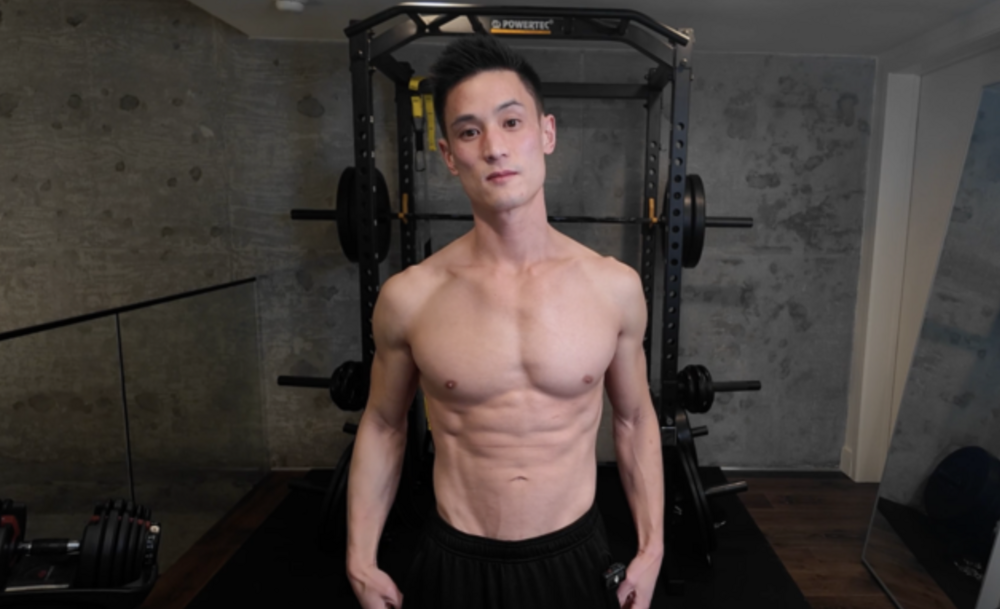 Yes i'm a tool and yes the lighting is phenomenal in that photo. I'm really not that meaty.
Yes i'm a tool and yes the lighting is phenomenal in that photo. I'm really not that meaty.
Way 2 - as a % of total calories eaten
- Let's say my goal is to eat at least 25% of calories from protein, up to 35%. Why? The protein leverage hypothesis says that I'll be less hungry and eat less if I go up to 30% total protein.
- Let's calculate what that means using myself. I burn 2400 calories a day (see above) . I want to maintain so I want to eat 2400 calories exactly.
- 2400 cals * 25% protein = 600 cals of protein
- 600 cals of protein / 4 cals per gram of protein = 150g protein
- This matches Way 1.
Conclusion: Aim for 1g protein per lb of body weight if you are lifting weights
The best studies and my personal experience says that aiming for 1g protein per lb makes sense.
Will you suffer if you don't get the full 1g protein per lb? No. This can be an aspirational goal. But you should def try to get more than 0.75g per lb.
Even if you aren't lifting weights, there is good evidence that you will preserve lean muscle and lose weight if you have at least 0.5g protein per lb, and 0.75g per lb is better (link). Studies have shown that to do this, people typically have to increase protein by 28.6% to over 0.5g per day for weight loss (link). Thus, I'd aim for 1g protein per day anyways.
Note: My assumption is that you do not have a kidney disease or any other major health issues (which could prevent you from eating too much protein).
*Analysis included only studies where participants were on a program at least 6 weeks long, at least 2 days per week training.
What 1g protein per pound looks like
I would think about protein in units.
Each unit is ROUGHLY 25g protein.
1 unit servings:
- 1/2 chicken breast (~1/4 lb)
- 1 chicken thigh (~1/4 lb)
- 1/4 lb steak
- 1/4 lb fish
- 4 eggs (whole)
- 1 scoop protein powder (check the label)
- 1 high protein bar (check the label)
So based on your weight, just know the number of units you need to get total.
Based on how often you eat, decide how many units to have per meal or snack.
Example: 150 lb guy that wants 150 grams of protein per day
Meal 1: 2 med chicken thighs
--> ~50g protein
Snack: Quest bar
--> ~25g protein
Meal 2: 0.5 lb steak (1/2 lb)
---> ~50g protein
Snack/Dessert: 1 scoop protein powder
---> ~25g protein
Total ~150g protein
Do I do this?
No. I just eat what I eat and it turns out to be 1g/lb or more automatically. (This is what I eat on a normal day).
My program is on autopilot mode. But you need to design your program
To do so, you can use the above guide as a reference, weight out all the protein you eat, or just wing it. It's really up to you. The most important thing is to decide if you like it, and if it results in measurable progress. Like a founder, you should test what works for you, and lock in whats most effective.
Citations
Morton RW, Murphy KT, McKellar SR, Schoenfeld BJ, Henselmans M, Helms E, Aragon AA, Devries MC, Banfield L, Krieger JW, Phillips SM. A systematic review, meta-analysis and meta-regression of the effect of protein supplementation on resistance training-induced gains in muscle mass and strength in healthy adults. Br J Sports Med. 2018 Mar;52(6):376-384. doi: 10.1136/bjsports-2017-097608. Epub 2017 Jul 11. Erratum in: Br J Sports Med. 2020 Oct;54(19):e7. PMID: 28698222; PMCID: PMC5867436.
Schoenfeld BJ, Aragon AA. How much protein can the body use in a single meal for muscle-building? Implications for daily protein distribution. J Int Soc Sports Nutr. 2018 Feb 27;15:10. doi: 10.1186/s12970-018-0215-1. PMID: 29497353; PMCID: PMC5828430.
Protein Leverage Hypothesis
Ray's Take
I was thinking about protein, and came across something called the protein leverage hypothesis (PLH).
What is it?
The PLH proposes that our bodies will always target a certain % of calories coming from protein. This means we will want to eat until we hit ~15% of the total calories we eat being protein.
The originators of the PLH believe that the world has gotten fatter (70% of USA being overweight or obese) because the total calories we eat is more weighted toward fat and carbs now.
So if there are more carbs and fat to eat, this reduces the amount of protein we eat (as a % of total cals), and our bodies stay hungry. They refer to this as protein leverage:
Studies have shown that humans, like many other species, regulate protein intake more strongly than other dietary components, and consequently if dietary protein is diluted there is a compensatory increase in food intake—a process called protein leverage.
Simply stated, if the % of calories you eat are too low in protein, you'll automatically eat more.
Data
This is data shown a review paper (cited below):
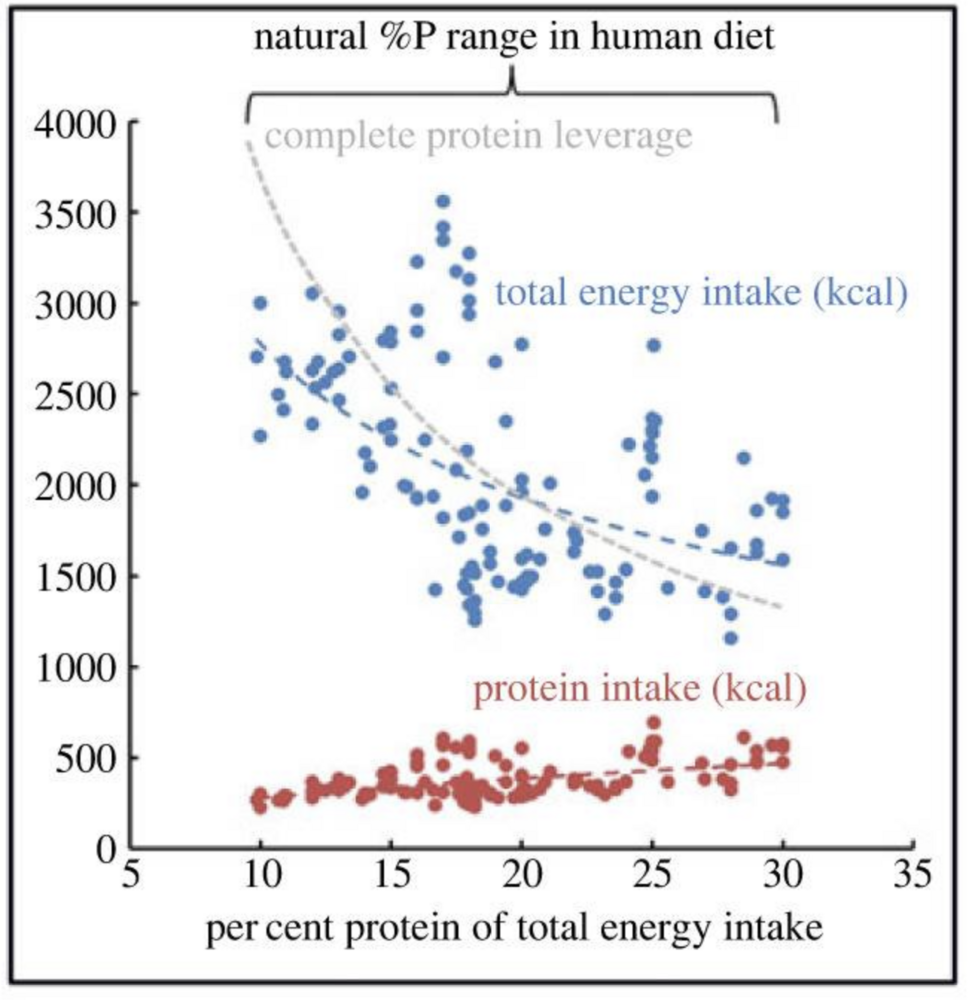
The X-axis is the percent of protein people ate, and the Y axis is the total calories they ate. As you can see, there is a trend toward the higher the % of protein, the less people ate. Keep in mind this is combining data from 44 studies that measured dietary protein %, not one study. This isn't always "good".
They also look at randomized controlled trials:

Again X-axis is % protein and Y-axis is total cals. This basically shows that if total protein increases from 10% of cals to 30%, people ate less cals. However PLH does not apply at very low levels (5% protein) where malnutrition may be at play.
I know eating protein is important for muscle growth/preservation, it tastes good, I eat a lot of it, so sure I'll buy into the PLH. However, the authors published the review of PLH in 2023 in an obscure journal, so I was kind of skeptical.
However, I found out that Kevin Hall wrote a review on the PLH in 2020 so I got more interested.
I like Kevin Hall. He's the lead researcher for the NIH on obesity, and calls it like it is, based on data. I think he's reasonable and smart (even though other nutrition researchers hate him for questioning their models).
What did Kevin do?
He made some fancy math equations that would model how much extra calories people would eat, and how much weight they would gain, given lower protein % based on perfect protein leverage and partial protein leverage.
Here is the most important data:
They first used Food and Agriculture Organization of the United Nations (FAO) to check how much % protein people ate since 1973. (not shown here). Suffice to say people started eating less % protein since then.
They then looked at observed weight changes by year:
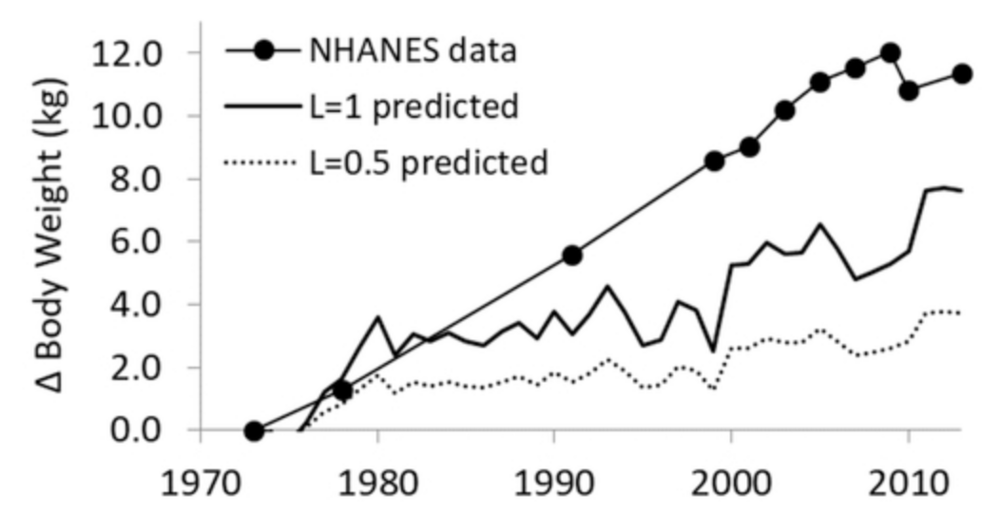
- The top line is how much people actually weighed by year. This weight data was from the National Health and Nutrition Examination Survey.
- The solid line is how much weight the PLH would have predicted with full leverage (100% of the predicted increase in calories based on lowered % protein).
- The dotted line is how much weight the PLH would have predicted with partial leverage (50% of the predicted increase in calories based on lowered % protein).
The data basically shows that too having % of protein be low could actually cause people to eat more and gain weight.
Kevin's conclusion:
Therefore, contrary to my previous conclusion (he previously did a separate analysis saying PLH was wrong), even partial protein leverage could potentially play an important role in obesity that should not be ignored.
My conclusion:
Make sure you get enough protein - no brainer.
Now there is decent chance that eating more protein can make you more full so you eat less other shit. Amazing
How much? Read this next.
Citations
Hall KD. The Potential Role of Protein Leverage in the US Obesity Epidemic. Obesity (Silver Spring). 2019 Aug;27(8):1222-1224. doi: 10.1002/oby.22520. Epub 2019 May 16. PMID: 31095898; PMCID: PMC7147114.
Raubenheimer D, Simpson SJ. Protein appetite as an integrator in the obesity system: the protein leverage hypothesis. Philos Trans R Soc Lond B Biol Sci. 2023 Oct 23;378(1888):20220212. doi: 10.1098/rstb.2022.0212. Epub 2023 Sep 4. PMID: 37661737; PMCID: PMC10475875.
Ray’s thoughts on nutrition research wars
Ray's Take
Background:
I went to medical school - they taught zero about nutrition.
I experimented on myself - I learned a lot about what works for me.
I made the most used health and weight loss social network - I learned when/how/why people "social" when they are trying to lose weight. I also saw all the crazy shit people would try and get excited about, when I knew there was zero chance it would work (shakes, tea, cleanses, etc).
I made a "healthy" keto program (mediterranean low carb) with a breath sensor that gave people feedback - I saw the value of low carb, fast feedback and even proved in a randomized controlled trial how effective it was (link). However, I also never did keto long-term myself (too hard, didn't have to, not sustainable for me) and do not believe anyone needs to do this (though it works very well if you actually want to do it).
This is my way of saying, other than med school which was useless for this topic, I have lived the hard knocks of real world nutrition and diet programs.
--
I've also stayed up to date in all of the nutrition research from the top institutions (NIH, Harvard, etc.).
Let me tell you, this world is fucking crazy. It's literally a circle jerk combined with a religious war. Oh wait, thats basically just a religious war.
Let's start with what everyone agrees with:
"All theoretical models of obesity, must satisfy the principle of energy balance to avoid violating the laws of physics." (link)
What is the principle of energy balance and how does it apply to humans?
Energy balance is based on the first law of thermodynamics: energy cannot be created or destroyed. It can can transferred.
(link)(link)
We humans can take in energy through food and drink, and expend energy through resting metabolic rate (RMR)—the thermic effect (TEF) of food and physical activity.
If we take in more energy than we burn, we need to store it. The primary storage place is fat.
If we burn more energy we take in, we need to get it from somewhere. We get it from glucose (eaten carbs), glycogen (stored glucose), and then fat.
Thus, you want to lose weight (amd fat), you have to consume (eat or drink) less calories than you burn. This is known as a "law of physics" and no one disagrees. You may know this as calorie in / calorie out. (link)
What else does everyone agree with?
Protein and carbs are 4 calories per gram. Fat is 9 calories per gram. (link)
The way different foods are metabolized (processed by your body) are different. Protein is metabolized differently than fat which is different than carbohydrates.
The thermic effect of protein is higher than fat and carbs (it takes more energy for your body to process protein than carbs and fat). You need to get enough protein to preserve muscle, but not too much.
If you eat carbs, especially simple carbs (IE sugar or processed carbs), your body will produce more insulin. If you eat less carbs, your body will produce less insulin.
Too much insulin is generally not good bc it leads to insulin resistance (type 2 diabetes) and fat storage.
Fiber is from carbs that are not digested and is good (there are two types of fiber, soluble and insoluble).
Refined carbohydrates aka processed foods aka white bread, white rice, pasta, sugary drinks, candy, chips, cookies, ice cream, etc. are bad.
What are the competing religions?
Ok, now here is when things get really fucking confusing, and frankly annoying.
There are multiple "models of nutrition" coming from heavyweights in the "elite" academic institutions.
First, we have the Energy Balance Model (EBM), not to be confused with the principle of energy balance, which is spearheaded by Dr. Kevin Hall, who works for the National Institutes of Health (NIH / NIDDK), the top US governmental public research institution.
What is the EBM? (link)
- Calories in being greater than calories out leads to weight gain
- HE DOES NOT say that a calorie is a calorie. However, he does say that cals in vs cals out is a "law of physics."
- EBM says that the central nervous system (brain) has the largest effect on what you eat and how fat you are through complex signaling.
- EBM says there are complex environmental factors at play that lead people to eat more of certain foods because of biology (dopamine aka food rewards), social pressures, habits, cost, and availability
The upstart model is the carbohydrate insulin model (CIM), which is promoted by Dr. David Ludwig from Harvard, and Gary Taubes, a best seller author.
What is the CIM? (link)
- Calories in being greater than calories out indeed causes weight gain HOWEVER, the first step is that eating carbs, or more specifically eating a diet high in glycemic load (high volume of high glycemic index foods), leads to increased insulin secretion (emphasize this is the causal first step).
- Higher insulin secretion leads to adipose tissue (fat tissue) getting bigger (more triglycerides produced from sugar eaten).
- The fat tissue takes up all of the nutrients eaten, starving the rest of the body (liver, brain, muscles) which leads to people feeling hungry and leading them to eat more. But they eat more of the same bad carbs which perpetuates this cycle -> eat more carbs that raise insulin -> those carbs turn into fat -> the rest of the body gets nothing so you eat more bc you are hungry
- In addition to the above, the CIM says that if you reduce carbs (glycemic index), there are additional benefits. 1) Metabolic advantage - this means people on a low carb / low insulin nutrition plan burn more calories, given the same total number of calories consumed. 2) Lose more fat - this means people on a low carb / low insulin nutrition plan lose more fat, given the same total number of calories consumed. 3) Less hunger - this means that people on a low carb / low insulin nutrition plan will eat less bc they are less hungry than those who eat more carbs.
What happened?
Kevin Hall did two super official studies (link) (link) in which people were kept inside of a ward, and given food that had a known amount of calories, fat, carbs, and protein aka they could not cheat or eat anything else. One showed that:
- Low carb diet did not meaningfully increase calories burned (energy expenditure)
-Low carb diet did not cause people to lose more fat
Who cares?
They do, a lot. The Low carbers protested the study. (link)
The EBMers (Kevin) replied. (link)
They each wrote "perspectives" explaining or re-explaining their models. (CIM perspective)(EBM response perspective)
What else cares?
My guess - no one. Seriously.
What else
I'm being biased here, but i'm just going to add four data points that I think actually matter:
- Protein is necessary for preserving muscle , increases satiety, and takes more energy to process (higher thermic effect). There is also a "protein leverage hypothesis" that says people eat until they get enough protein, and if they don't get enough, they will keep eating (IE chips, bread, candy, etc) until they get enough. I personally think and hope this is true. In any case, if you are strength training (and you should be), you need protein.
- Fiber is good bc its good for your gut and microbiome, but at bare minimum bc it is not digested (IE zero calories) and sits in your gut and thus makes you feel full. Water and air also make you feel full.
- There have been massive studies (Predimed) that showed Mediterranean diet prevents heart disease. Mediterranean = olive oil, nuts, fish, veggies. They could eat carbs.
- There was a year long RCT at Stanford (Dietfits) that showed low carb and low fat diets work about the same.
So what should you do based on the above.
Above all else, find something sustainable that moves you toward your goal. It's the only thing that matters.
What does sustainability mean?
- Love what you eat
- Do not feel like you are missing out on anything
- Moving toward your goal
*If you are unsatisfied for any reason (hunger, taste, social, access, etc), you will fail. You will not be able to "sacrifice" long term.
For me, thats eating maximum volume with minimum carbs. I like it because it is very sustainable for me. I get to eat a lot, food has amazing flavor, and I'm never hungry (in fact usually quite full).
Maximum volume, minimum calories:
- Eat as much high fiber low calorie food as you want --> this is almost just high fiber vegetables. Eat max of cauliflower, broccoli, lettuce, greens, cabbage, spaghetti squash. So healthy, makes you so full, zero downside.
- To make the above taste good, add fat while cooking or as a sauce --> the best fat is olive oil for cooking (good for heart health as per predimed), and I like guacamole for sauce as it tastes amazing and avocados also have great fats. Note, you should not go HAM aka unlimited on olive oil or avocados bc they do have a lot of calories)
- Eat plenty of protein --> This usually comes in the form of beef, pork, chicken, fish, etc. All of these foods taste amazing, and should be eaten every single day. However, you should not go unlimited bc they all include fat and thus are med/high on calorie density. Just have a good amount until you are satisfied. Simple.
- You must enjoy life --> Life is not a nerdy research paper or science equation. You like what you like. I like what i like. Our families do what they do. There are traditions on a daily, monthly, and yearly basis. You should assess what the food are that you like, that you have the knowledge to understand might not be the best for your health or physique. Quantify how bad it actually is. Then decide if its worth it to you. If so, then go for it! I do this all the time and often eat/drink foods I know are "bad." This is what it's all about. Knowledge is power.
What I do and why
Spices and condiments I use, and where I buy them
Ray's Take
Spices
- My spice mix (see below)
- Salt
- Garlic powder (granulated garlic)
- Onion powder
- Oregano / Italian herbs
- Black pepper
- Red pepper flake
- Sazon
- Adobo
Condiments
- Mayo, Best foods low fat mayo
- Ketchup, Heinz no sugar added
- Mustard, Grey poupon
- Soy sauce, Kikkoman low sodium (green one)
- Sesame oil, Kadoya
- Oyster sauce, lee kum kee panda
- Chipotle peppers
- Red wine vinegar
- Sherry vinegar
My spice mix, soon to be "your spice mix" - highly recommended
How I use: I have an old large spice container (costco size) where I will add roughly 3/4 garlic powder, and the rest onion powder and salt. I use this on EVERYTHING including meat, veggies, guacamole, and everything else. I highly recommend you make your own mix like this, with the following tips:
- Make sure salt is at most 1/4 of your mix. Mine is probably 1/5. This lets you sprinkle the mix heartily without making anything too salty -> more flavor, not too salty.
- Add whatever spices you like (that don't include salt) for the rest. If you don't know, just start with garlic powder 3/4 and salt 1/4. If you like black pepper, add some. If you like onion, add onion powder, If you like spicy, add red pepper flake. Just make sure its mostly spices and not salt. Now it's your spice mix.
- You don't need to measure exactly. Just eye it. It's fine. All garlic powders are different intensity and salts have different saltinesses.
- My process is: Add a bunch of garlic powder (kirkland) in the container, then add 1/4 to 1/5 the amount of garlic powder of fine sea salt (kirkland), then add about the same amount of onion powder as salt. That's it. The exact measurements don't matter. Feel free to start with this process.
Salt
How I use: In my spice mix so on literally everything. I like to add more salt than average to everything.
Where I buy: I've been using Costco Kirkland fine sea salt.
What to know: Different salts have different levels of saltiness....yes its true (influenced by size/shape). So just know that. Also, don't buy the Morton's iodized salt. It's cheap but its been stripped away of everything. I found i was getting leg cramps, but then after switching to sea salt, they went away.
Garlic powder (granulated garlic)
How I use: In my spice mix.
Where I buy: Costco.
Notes: Make sure its no salt added.
Onion powder
How I use: In my spice mix.
Where I buy: Costco.
Notes: Make sure its no salt added.
Oregano
How I use: In pasta sauces or carnitas usually.
Where I buy: Amazon, I use McCormick and buy large size.
Notes: You can add a lot of oregano to savory, non-asian dishes and its usually good.
Italian seasoning
Basically the same as oregano. Decide which one you like better
Black pepper
How I use: I actually am not a huge fan of black pepper on most things. Fresh cracked on salad is ok, or on steak. I don't really like it on most things. I do use it in my Asian salad dressing.
Where I buy: Any fresh cracked pepper. Haven't found a favorite. I don't like the pre-cracked Kirkland one.
Red pepper flake
How I use: Occassionally on veggies or meat. I don't love spicy
Where I buy: Costco if they have it.
Vegetables I eat, and how I buy them
Ray's Take
Vegetables
- Cauliflower, whole
- Broccoli, florets or crowns
- Spaghetti squash, whole
- Romaine lettuce heads
- Spring Mix , carton
- Baby spinach, carton
- Tomatoes
- Onions
- Mushrooms
- Red peppers
- Napa cabbage
- Avocados
Cauliflower
How I eat: Roasted whole with olive oil, almost every day. Recipe
Where I buy: Trader joe's is the best, but anywhere they price per whole cauliflower
Organic or not: Weirdly non-organic cauliflower usually has better integrity/denseness so I go with that. It's also cheaper
Other thoughts: I go to Trader Joe's and pick the biggest ones that also weigh the most. Bc its priced per lb, this gives the most value and I am a value player. Pre-cut is fine but I've had a bad experience with costco (fermented, old) so don't buy it from there.
Broccoli
How I eat: Roasted with cauliflower usually (IE I have both together). Sometimes just one or the other if that's all I have. It's also actually really good raw if you just drizzle with olive oil and sprinkle seasoning on top (garlic powder, salt). The trick for the raw version is make the florets small.
Where I buy: Any grocery store
Organic of not: Usually not. Don't perceive organic to be worth it
Other thoughts: I like florets in a bag if its cheap but don't mind crowns. I don't like the trader joe's whole broccoli bc too much core so i'll get florets at trader joe's usually. Crowns at whole foods. I used to get bags at Costco but it seems they stopped carrying it.
Spaghetti squash
How I eat: Roasted, with meat, guac, salsa, pico, and optionally greens. Recipe
Where I buy: Trader Joe's or anywhere they have it priced per lb
Organic of not: I think the ones at TJs are organic
Other thoughts: I pick the biggest, heaviest ones at TJs for highest value
Romaine lettuce
How I eat: Lettuce wraps with tex-mex food (meat, guac, pico) or with simply seasoned roasted chicken. Alternatively, chopped and turned into a salad.
Where I buy: Trader Joe's but can get anywhere.
Organic or not: I usually do get organic TJs bc i don't like washing lettuce. I take the outer leaves off. Wet lettuce tastes really bad and can ruin everything. But the lettuce / veggie spin dryers are super annoying to use and to clean and store. This is also why i stopped buying lettuce at farmer's markets (they usually have dirt on them).
Spring Mix
How I eat: Salad
Where I buy: Anywhere is $5 per lb
Organic or not: Yes
Baby spinach
How I eat: Salad
Where I buy: Anywhere is $5 per lb
Organic of not: Yes
Tomatoes
How I eat: Homemade salsa (highly recommended, recipe coming soon) and homemade pico (chopped tomatoes, onion, cilantro with garlic powder and a little salt, lime juice)
Where I buy: Trader joe's chepeast, but will get anywhere
What kind: I usually go for Romas - its less flavor but consistent and i like it for homemade salsa and pico
Organic of not: Whatever they have at TJs or depends on the firmness of the tomatoes. I buy firm so they last a long time
Onions
How I eat: Added to meat dishes, salsa, pico.
Where I buy: anywhere
What kind: usually yellow
Other thoughts: I pick the ones that are firmest bc they will last the longest. Bigger onions are a better value bc you through away a lot of the small ones (I usually throw away the outer layer with the skin as part of peeling process).
Mushrooms:
How I eat: For buttons, mix into meat dishes to add more volume with no cals. Yes this works. And yes, it is good. For others, add for flavor into various dishes.
Where I buy: Trader joe's sometimes. There is a really good mushroom store in SF called Far West Fungi. I usually get from there. They supply whole foods too.
What kind:
- Buttons: I like white buttons better than crimini / baby bella on taste but they don't last as long (they are the same species). Buy these all the time and add to meat dishes to add bulk. I buy a lot of this.
- Shitake: These are great for flavor. Buy all the time
- Maitake: Insane flavor. Expensive, but these are dank. You should try. I really like but don't keep around as much as above ones bc its like $20/lb
- Other: I think chanterelle, morel are overrated. Enoki (cheap) from asian grocery store weird me out bc they last literally forever. I do not buy the shitakis from china.
Red peppers:
How I eat: Don't do this all the time but making romesco (recipe coming soon) and escalivita (recipe coming soon). Both are really good. Sometimes chopped to go with tacos.
Where I buy: Anywhere
How to pick: Smell them. Should smell like red pepper.
Avocados:
How I eat: Guacamole, every day
Where I buy: Costco, Trader Joe's, Whole Foods
Organic or not: I can't actually discern if organic is worth it. Honestly I usually buy one bag of organic from costco and one bag of non-organic at the same time. I let it ripen until just barely soft and put in fridge.
How to pick: Err on too hard vs too soft. If you have to have for tonight, just pick one that is soft but not too soft.
Napa cabbage:
How I eat: I used to be obsessed with napa. I'm not quite as obsessed today, but it could come back.This is the ultimate max vol least cals food. I would have napa salad (just sliced) with everyone's favorite dressing with almonds (recipe coming soon). Can also sautee with meats/low carb noodles, or add into asian soups.
Where I buy: Asian grocery store. Period. Its like 1/5 the price vs whole foods.
Organic or not: They don't have organic napa at Asian grocery stores.
How to pick: Yellow is better than green. Size doesn't really matter.
Guacamole
Ray's Take
I love guac.
I make the best guac.
My guac is the simplest guac.
Everyone loves my guac and asks me how its so good.
Really there are only 2 tricks:
- Pick the right avocado
- Season correctly
Choosing the right avocado
This is by far the most important step.
The avocado should be barely soft when you press it lightly. Not hard, not mushy. If you have to err on one side or the other, always too hard. Never buy a avocado that is too soft.
So the trick / reality for avocados is that it is hard to just go to the store and buy a perfectly ripe avocado. You can do this if you are in a bind, but its much better to buy a bunch of hard avocados and let them ripen at home.
When they are just barely soft to the touch, put them all in the fridge. They'll continue to ripen very slowly, and will be good there for a week or so. Use this trick and always have access to good avocadoes.
This avocado looks good. It's perfectly green (no brown spots):
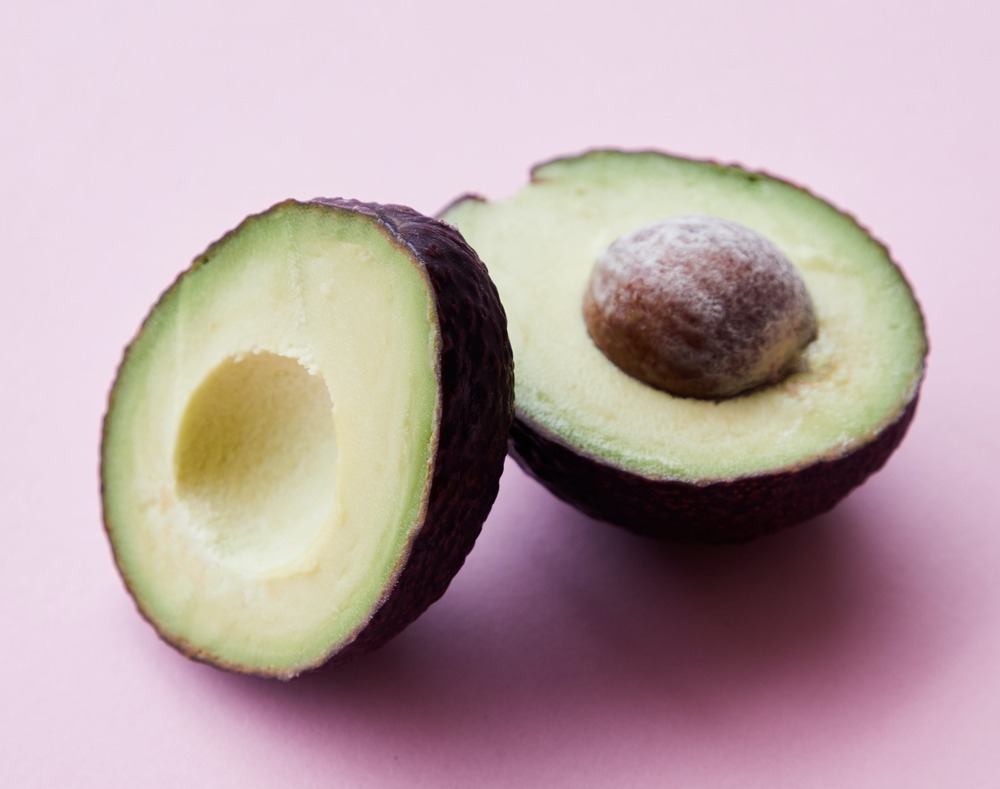
Season correctly
To make your guac*:
- slice it in half
- twist to get two halves
- scoop out flesh with spoon into bowl
- add a squirt of fresh lemon or lime (i go with lime if i have a choice, but both work).
- sprinkle salt
- sprinkle garlic power (optional but i add it)
- mash with a spoon or fork.
Thats it. No need for anything else.
This photo doesn't do this guac justice
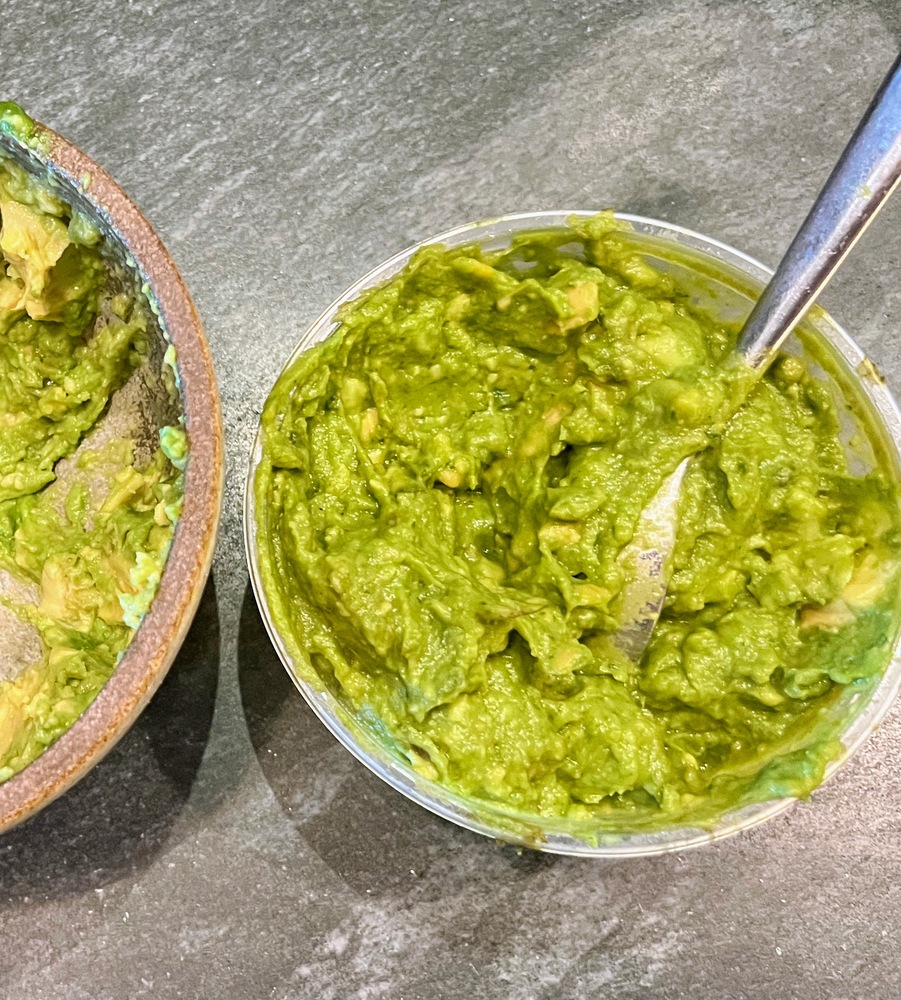
This is a perfect opportunity to learn how to cook w/o a recipe.
Making guac is a great way to learn how to cook.
How much lime/lemon should I add?
You can add more than you think you need. -> acid makes food taste good. This is probably why people like my guac - i add more acid than them (1/4-1/2 lime depending on size). If you add too much do less next time or add more avocado. I'd suggest adding until you add "too much" for practice.
How much salt/garlic powder?
Taste it - add until you like the taste. Adding and tasting is key to cooking.
Can I add other ingredients?
Yes. My rule of cooking is don't add anything that doesn't 100% for sure make it better. I only qualify lime, salt, garlic powder. If you like onion, tomato jalapeno, chili flake, etc. go for it. You should test it and if you like it keep using it!
FAQs
Where do you buy avocados?
Costco is the best imo. Then trader joe's and whole foods are tied. Other grocery stores seem to be worse. This is just my perception from buying 1000s of avocados in California. I could be wrong for your area.
* A good vendor at farmer's market is best best. The conditions for growing avocados definitely matter for non-browning inside.
What do you eat it with?
Everything - veggies, protein, as a salad "dressing."
How much do you eat per meal?
Avocados are super healthy, but they do have a lot of calories. I usually do 1/2 an avocado per meal. You can eat too much if you want to lose weight / get ripped. Thus guacamole falls into the Rule 3: Eat delicious higher calorie foods, but don't overeat category
What kind of avocado do you eat?
Usually Haas. I've had really good other varietals but usually only at farmers markets. Feel free to try other kinds!
How do I know if the avocado is perfectly ripe?
Barely soft to touch, you cut through it and its easy to cut, and perfectly green.
-> Huge dopamine hit every time I see this.
How do I know if the avocado is too hard?
You'll know bc you can't mash it or can't cut through it easily. If this is the case, stop cutting and let it ripen.
How do I know if the avocado is too soft?
You'll cut it in half and see its brown inside. I aggressively throw out the brown parts.
Does the skin of the avocado matter?
People say the skin doesn't matter, but I personally think it does. I choose smooth skin over the ones with many ridges and bumps. Not sure if this is in my head or real, but I go with it bc my personal experience tells me that smooth skin has a higher likelihood of perfect green flesh and no brown spots.
Baked chicken with cauliflower
TLDR: What you need to know
- Follow this process to make a delicious, healthy meal with chicken thighs and cauliflower (or broccoli).
- This process is great for learning how to cook because it is hard to mess up.
- I make it at least 1x a week.
Ray's Take
Make this chicken recipe.
It's a great meal for beginner and advanced cooks.
It's easy, hard to F up, and really good.
When I am home alone I make this recipe like 75% of the days to eat myself for dinner.
It's also a really good way to learn the Ray Wu method of cooking
- no recipes
- know fundamentals
- taste your food
- improve next time
What you'll need
Equipment
- an oven
- 2 baking sheets
- tin foil
Food
- chicken legs or thighs
- cauliflower florets (broccoli works too)
Oil/Seasoning
- olive oil or avocado oil (spray works too)
- salt
Extra
- a sauce
Step 1
Preheat your oven to 425 degrees.
NOTE - most people and most recipes cook at way too low of temperature. We'll fix that.
NOTE 2 - preheating matters
Step 2
Put tin foil on your 2 baking sheets.
Step 3
Put your raw chicken on one of the baking sheets and drizzle with olive oil or avocado oil. Make sure to get oil on both the bottom and the top.
NOTE - how much oil should you add? Honestly, it doesn't really matter. For today, let's start with the minimum amount that it takes to barely fully cover the bottom and the top of the chicken. Don't measure this out. Just go off of feel. You can use tongs (or your hand) to move the chicken around so the oil spreads evenly (optional).
Raw chicken on baking sheet
Step 4
Take your cauliflower, and put it on the other baking sheet. Again, drizzle your oil on top and use tongs or your hand to move the cauliflower around in the oil.
NOTE - how much oil should you add? Again, go off of feel. Use the minimum amount so that all of the pieces of cauliflower have a thin coating of oil
Step 5
After your oven is preheated (you'll know bc a digital oven will ding or show the temperature, or if you don't have digital, just let it preheat for 15 min), place the chicken on a lower rack, and the cauliflower on a higher rack.
NOTE - the reason you do this is on the bake setting, heat comes from below. You want the chicken to get the higher heat so thats why its on the lower rack.
Step 6
Wait.
How long should you cook the chicken and cauliflower? Honestly, it depends.
It depends on your oven. It depends how you like it done.
In other words, cook it as long as you want. (The only caveat is the chicken needs to be fully cooked).
I'd guess to let it cook for 30 minutes.
NOTE - why did we start with chicken thighs? It's really hard to overcook! IE you can leave it in for a really long time and it will stay juicy and delicious. This is not true for chicken breast.
Step 7a
So how do you know the chicken is done?
Look at it, and when the chicken is brown on the outside, and appears to be cooked through, its probably done. For this dish, i'd leave it in until you are very sure its browned. (I like my chicken thigh more fully cooked anyways).
It should look like this:
Step 7b
How do you know the cauliflower is done?
Similar to the chicken, its brown and charred on the outside.
NOTE - you can burn cauliflower if you leave it in too long, so i often take my cauliflower out first. You can start checking after 20-30 min or so
It should look like this:
Step 8
Take your chicken and cauliflower out of the oven.
Use tongs or a fork to place your chicken and cauliflower on a plate
Now its time to start learning.....
Step 9
Sprinkle salt on your chicken and cauliflower.
How much? Less than you think you need to add.
Then taste it. If it tastes good, you're good. If it tastes bland, add more salt.
The trick here is its harder to take salt out if you add too much, which is why you always start with less.
We're not done though.
How is the chicken?
Is it chewy? That means you need to cook it longer.
Is it dry? That means you cooked it for too long.
Is it perfect? Then you nailed it.
Remember how you cooked it, and adjust it next time. And don't worry if you don't keep track exactly, you'll have unlimited tries on this.
Step 10
After you have taken your mental notes and added enough salt that the chicken and cauliflower taste good, just enjoy the rest of it for your meal.
Eat the chicken and cauli with a sauce (hummus, guac, salsa, mayo, ranch, bbq sauce), that preferably has low sugar added.
You can add a small side salad too!
Step 11 - important
Think.
What went well?
What didn't go well?
Take mental notes on how to improve next time.
Also, if you have leftovers, store it the right way [full process]. In short, put the cooked food directly into a container. DO NOT eat directly from the container. Every time you eat, you must take the food out of the container with clean hands or utensils (not utensils that have touched your mouth). This makes the food last at least a week in the fridge.
FAQs
What do you eat the chicken and cauliflower with?
Simple, homemade, guac is my fav [link]. You can have guac, hummus, baba ganouj, salsa, etc. Trader Joe's and whole foods have a lot of good sauces if you just want to buy. Just make sure no sugar added.
Do you use convection bake or regular bake?
I use convention - it cooks faster and more evenly. All convection means is the oven fan is turned on while the oven is on. The temperature is automatically lowered for you by 25 degrees (usually) on convection bake.
Does the exact oven temperature matter for this recipe?
No.
Will every oven cook the same?
No.
Do I need to flip the chicken?
No. But you can if you want.
How do i figure out the best temperature and time for my oven?
Start with 400 degrees for 30 min and then taste your food. Improve next time.
The chicken wasn't tender?
Cook it longer.
The chicken was dry?
You cooked it too long.
The chicken doesn't have enough flavor?
Add salt. You can also add garlic powder (i love), onion powder, red peppers or black pepper (I'm not a huge fan so i skip but other ppl like it).
The cauliflower isn't good?
You cooked it wrong. If you cook it right it is literally better than a baked potato.
The cauliflower isn't crispy on the outside and tender and soft on the inside?
Try adding more oil when you coat it
The cauliflower is burnt?
You cooked it too long or too hot. I find keeping the temperature the same but covering the top with foil helps this. I'd try this as step 1 if you get this error.
The cauliflower is too crunchy?
Cook it longer. Try adding more oil when you coat it and covering with foil on top to avoid burning.
The cauliflower doesn't have flavor?
Add salt, garlic powder, pepper to taste.
Spaghetti squash bowl
TLDR: What you need to know
Unbelievably healthy and delicious meal- spaghetti squash taco bowl
- 10/10 taste
- high volume ie you get to eat a lot - the squash 129 calories for a whole pound
- will make you super full
- perfect macros after adding guacamole, salsa, and meat
- under 400 calories 130 squash, 50 avocados, 200 carnitas, can ignore tomatoes and lettuce cals
Ray's workflow
1 - Buy spaghetti squash from Trader Joe's.
(Trader's charges per spaghetti squash, vs other places often charge per lb. I get the biggest squashes from Traders)
2 - Preheat oven to 400 degrees or 425 degrees convection
3 - Slice the spaghetti squash in half
4 - Put it in the oven on a sheet pan with foil, face down
5 - Let it cook for about 20-30 min.
6 - Take it out of the oven and scoop out the seeds
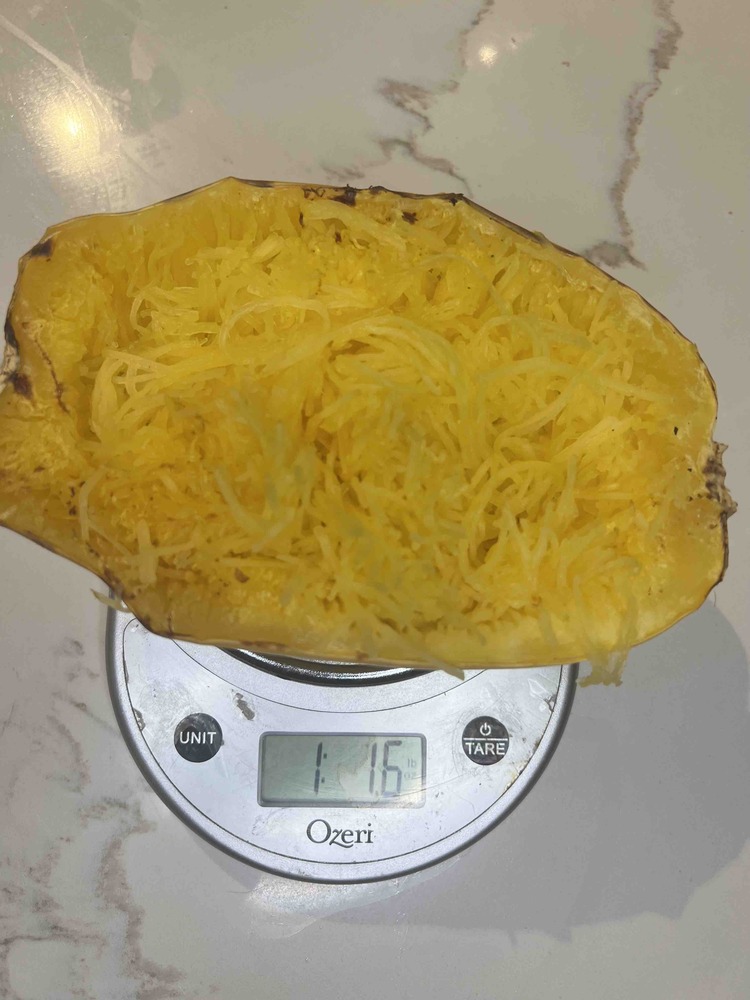
Image: My squash weighs just over a pound. We don't eat the skin though so call it one pound. This is a lot of food and only 130 calories, 25g net carbs, 7g fiber
7 - Add your toppings
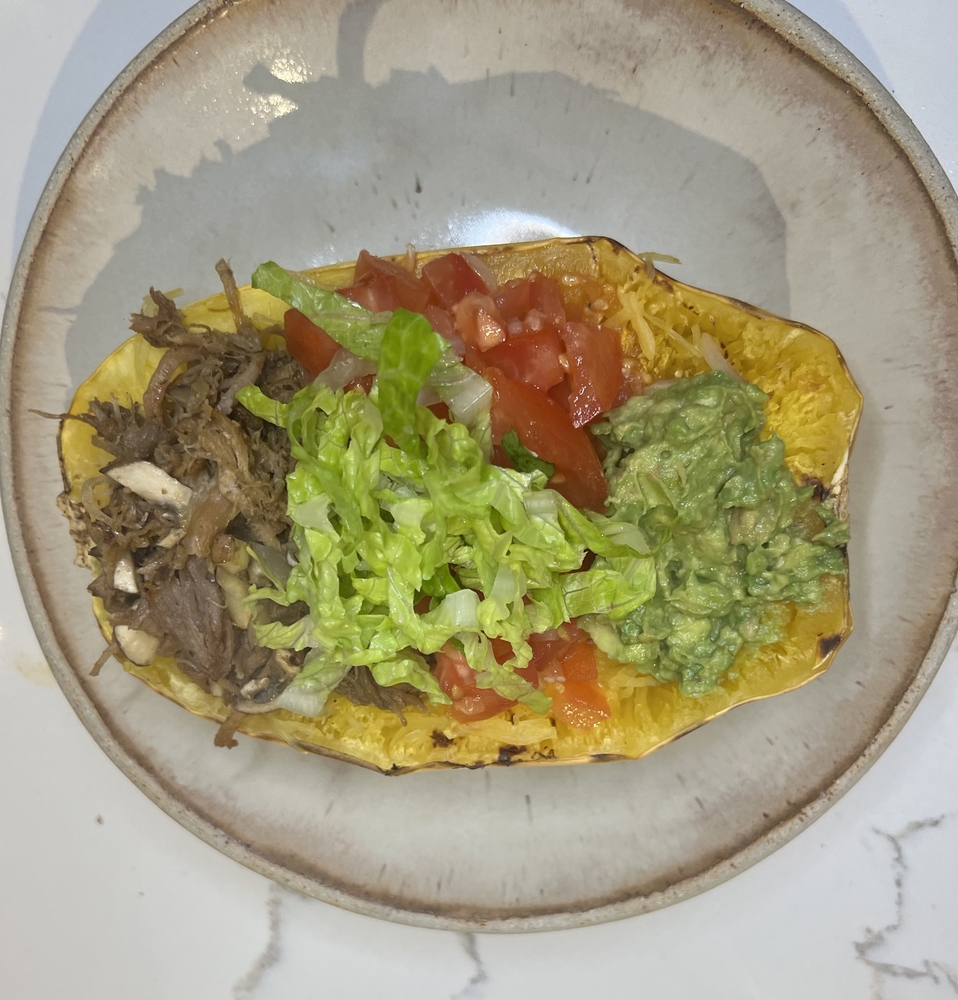
Image: I added carnitas, pico which is just cut up tomatoes and onions, and guacamole
8 - Eat as much as you want until you are super full
Protein fluff
TLDR: What you need to know
- Protein fluff is a delicious, healthy version of ice cream that I eat every single day. It will help you lose weight, and gain muscle. Seriously, it's a secret weapon. -Protein fluff is made by combining protein powder, ice, frozen fruit and blending it in a specific way to create a huge creamy fluffy "thing."
- It tastes like a creamier sorbet.
- It is high protein and low in calories.
- It makes you REALLY full.
- I love it and eat it every day.
Ray's Take
I love protein fluff.
I discovered it 15 years ago, and have had it almost every single day at home.
I loved it so much that when I was working at Mckinsey, I would buy a small blender to make it in hotel rooms.
So what is protein fluff?
It is a creamy ice cream like thing that probably tastes like a combo of ice cream, sorbet, and whipped cream.
Does it taste as good as full fat regular ice cream?
No. Lol. Of course it doesn't but it tastes really good. If gelato in italy is 10/10 delicious, I'd say protein fluff is 7/10.
I'm happy to eat gelato when in italy, but if i'm not, I'm having protein fluff. Every night.
Is it actually healthy?
Yes. It will 100% help you lose weight
What are the macros?
Just like everything else, it depends on how much of this and that you put in, but for A LARGE AMOUNT (so much you probably cannot finish in one sitting) you could estimate:
200 calories
25g protein
15g carb
13g net carb
almost no fat
Why is it a secret weapon?
- It tastes really good
- It satisfies sweet tooth
- It has protein, and is low in calories.
- It makes you super full. You can have so much you can't breathe
- You'll wake up looking and feeling super jacked
Ray's current method for making protein fluff
I don't ever measure anything. Here is background on how I cook (no recipes / just go off of feel), but here are general steps for how I make protein fluff today (Jan 2024).
Equipment:
- Vitamix blender (you can use any blender but i like the Vitamix)
Ingredients:
- Optimum Nutrition 100% Gold Standard Whey protein powder
- Frozen strawberries (10-12 medium, 6-8 large, 20 small)
- Frozen banana slices (2 small slices)
- Unsweetened almond milk
- Ice
- Liquid stevia
Method (follow this exact order)
Take blender container
- Add 1/4 cup (just a small splash) of unsweetened almond milk
- Add one scoop of protein powder
- Add whole ice cubes - 1 cup (you'll have more ice than almond milk)
- Add frozen strawberries
- Add banana slices
- Add stevia (as much as you want, i do probably 4-6 drops)
Put blender on the base
- Start blending at the lowest speed
- Let the ice crunch and break down to small consistent pieces while everything mixes together (be patient. i'd say leave for 20-30 seconds)
- Turn the blender up slowly to middle speed and let it blend for like 5-10 seconds (everything should be mixing smoothly. if not, you need to leave it on low for longer)
**You may stop here. Taste it - it will taste like a thicker yogurt like consistency with stronger flavor. Many people like this consistency. I continue to get more volume...
- Turn slowly up to blender to high speed (the key is everything is mixing smoothly. You don't hear the blender just blending air on the bottom. You see a vortex of blending with the fluff).
**You may stop here. The volume should be 2x what it was on medium. I continue to get more volume...
- With Vitamix, I turn on the max speed. It will increase in size by another 50%. (The blender will get to a point where its just blending air - you're done).
Taste it
- As always with the Ray Wu cooking method. You must taste your food.
- Do you like it?
- How could it be better?
- Not sweet enough? Add more stevia next time
- Too sweet? Add less stevia next time
- Too watery? You added too much ice or took too long to blend so the ice melted before you fluffed
- Not enough flavor? Add more berries or a sprinkle of salt
The point it, remember how you did it, and either fix it now, or improve tomorrow. That's how you get better at making anything.
After this, I usually pour out 2/3 of the fluff into a bowl and put it into the freezer. I eat the 1/3 remaining in the container out of the container.
Sometimes, i'll go back into the freezer and eat the rest. Other times, i'll just eat it the next day. Of note, its way better day-of bc it gets completely frozen for the next day, but feel free to choose your own adventure.
FAQs / Troubleshooting
Did you follow the instructions above exactly?
- If no, try that first
- Making fluff is an art so learn the basic way and then feel free to innovate
Fluff doesn't fluff
- Not enough ice
- Not enough berries
- Too much almond milk
- Wrong protein powder
- Didn't time the blending speed right
What proteins can I use?
- Most whey proteins will work. Casein is supposedly better but makes my stomach hurt
- I've used ON, Isopure, Musclepharm, etc. Will plan on doing taste test sometime.
What frozen fruit can i use?
- Berries are best
- Strawberries are my go to - it works and tastes good and low net carbs
- Raspberries are very very good - it works, actually blends and fluffs better than strawberry and lower net carbs
- Blueberries are very good - it works, slightly more net carbs than strawberries
- Blackberries - never tried but almost sure it will work
- Other fruit
- Banana - I slice bananas and freeze them. I use 2 slices every time. Bananas in general are bad bc they are very high in sugar and carb, but even just 2 slices enhances flavor and texture so I do it without regret. I don't add more.
- Mango - I skip - v high in sugar
- Avocado - I've tried - didn't like it. Makes it 2-3x in calories and not worth it
Can I combine fruit?
- Yes you should try and experiment
What other things can I add?
- peanut butter powder (enhances fluff)
- cocoa powder
- cinnamon
- salt (enhances flavor, don't add too much)
Ray eating gelato in Italy
I love gelato and yes I eat it when in Italy.


Yes, I ate all that.
How to learn how to cook (or cook better)
TLDR: What you need to know
- The only way to learn how to cook, is to actually cook.
- You can read 100 articles, and watch 100 videos, but that won't help you learn how to cook.
- The difference between the Ray Wu MD program approach to cooking and regular cooking approaches, is that we want to teach you the fundamentals of cooking so you can cook without needing to follow recipes or instructions.
- Let's start now
Ray's Take
I hate following recipes....so I don't follow recipes.
Then how do I know how much of _____ to add to each dish and how to cook it?
It's actually simple. You just need to have good fundamentals for knowing which ingredients to use and when/how to use different cooking methods.
From there, it's keeping it as simple as possible.
Start with good quality ingredients.
Don't add any ingredients that aren't necessary.
Cook the ingredients the right way (not overcooked, not undercooked).
Taste your food, and learn how to season it appropriately.
Serve complimentary items together (IE protein + veggie + sauce).
Why do you cook this way?
Because following recipes is annoying and takes way too long. Also, most of the steps and many of the ingredients aren't actually necessary -> following recipes creates an "illusion of complexity" that just isnt' necessary.
Also, cooking this way, you don't have to plan nearly as much.
- you have all the spices you need [link for full details]. Really the only essential is salt.
- you can assess what you have at home, and cook something good 99% of the time.
- if you are missing an ingredient, it doesn't matter.
What else?
You can experiment and improve over time. This is bc you are building a foundation of knowledge you can easily add to. You are always iterating. You are always improving. You can taste things restaurants or other people make, know how to make a better tasting, healthier version. If you like it, you have a new go to dish.
You are unstoppable in the kitchen and guests are wowed. It's fun.
Get started
Here is a (always growing) library of dishes that are great starting points for beginners or intermediate cooks. Will be cool for advanced chefs to view too.
Main dishes
Baked chicken with cauliflower
Sides/Saunces
Guacamole
Dessert
Protein ice cream aka protein fluff
Equipment I recommend
Full details for all the hardware (pans, blenders, etc), food, and spices I use [here].
Why you should learn how to cook
TLDR: What you need to know
- You can and should learn how to cook. This series will teach you the foundation for cooking healthy and delicious food for the rest of your life. You can also get more personal tips and feedback by joining the Ray Wu MD program.
- Cooking lets you eat healthier food.
- Cooking lets you eat tastier food.
- Cooking lets you save $ on food.
- Cooking lets you prepare, serve, and enjoy food with your friends and family (and they'll appreciate it).
- You might think cooking takes too much time, but we'll teach you how to cook fast.
Ray's Take
I used to half joke with people that its unfortunate, but one of my best skills is cooking. As I get older, I'm thinking more and more that actually cooking is an amazing skill to have. And everyone can learn.
There are so many reasons to learn how to cook. Speaking for myself, I prefer eating home cooked food to restaurant food 99 out of 100 times. Do I eat out? Yes, I am not an anti-social hermit.
However, I truly believe that my food at home is healthier, tastes better, and cheaper than restaurant food, while 100% being made with higher quality ingredients.
At this point, the only times I'll eat out is if its with a special group of people, or a very special restaurant.
The way I cook, meal planning is also a non-issue. In fact, I don't plan my meals at all. I don't follow recipes. And it really doesn't take that long.
You can have all of this too - healthy, delicious food every day that costs less and tastes better than anything you can order or eat at a restaurant. This series will teach you the fundamentals you need to know, and then how to improve your skills with every meal you cook.
Like all things, the more reps you get, the better and faster you'll get. I promise getting your reps in the kitchen will be one of the most valuable things you can learn and do.
Photos of weeknight home cooked meals
Salmon with asian salad (we like new zealand salmon)
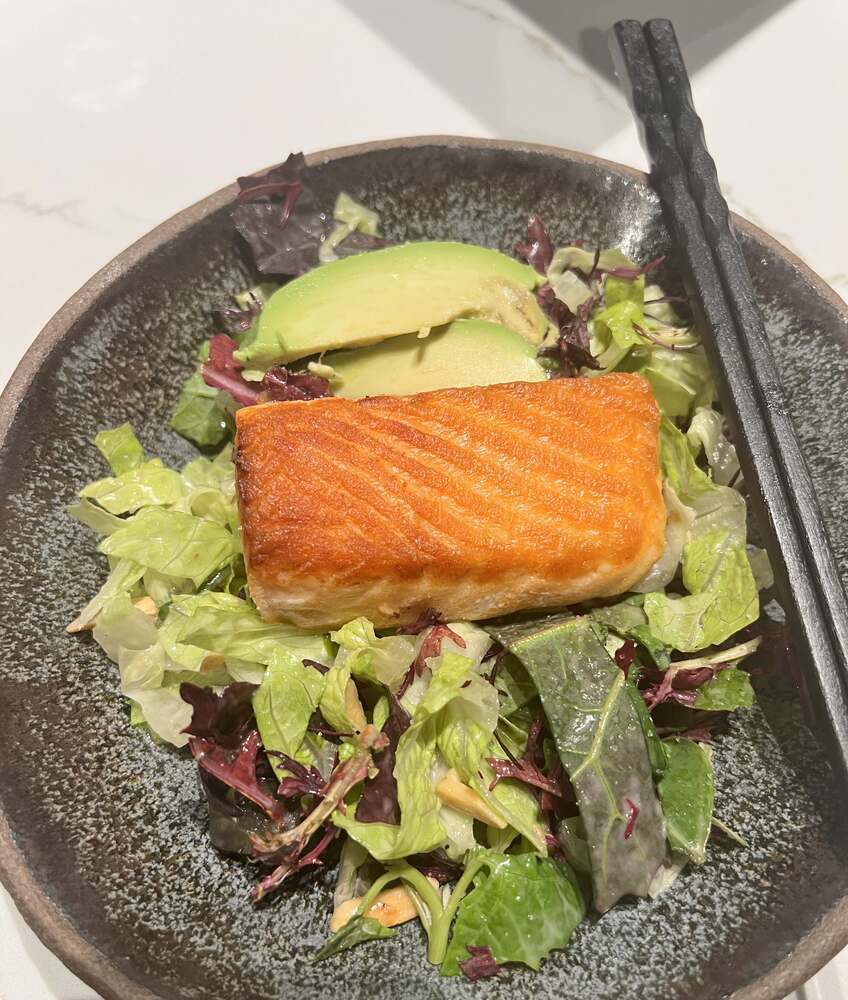
Thai basil chicken with cauliflower rice and chinese vegetables
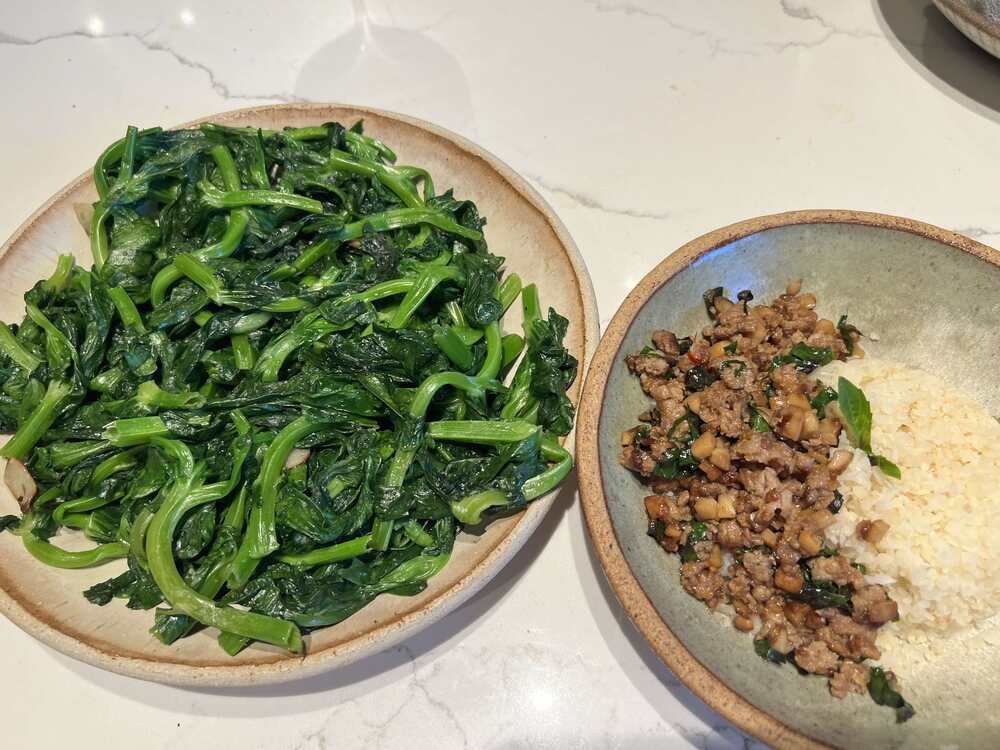
Steak with mashed cauliflower

Carnitas tacos on low carb tortilla
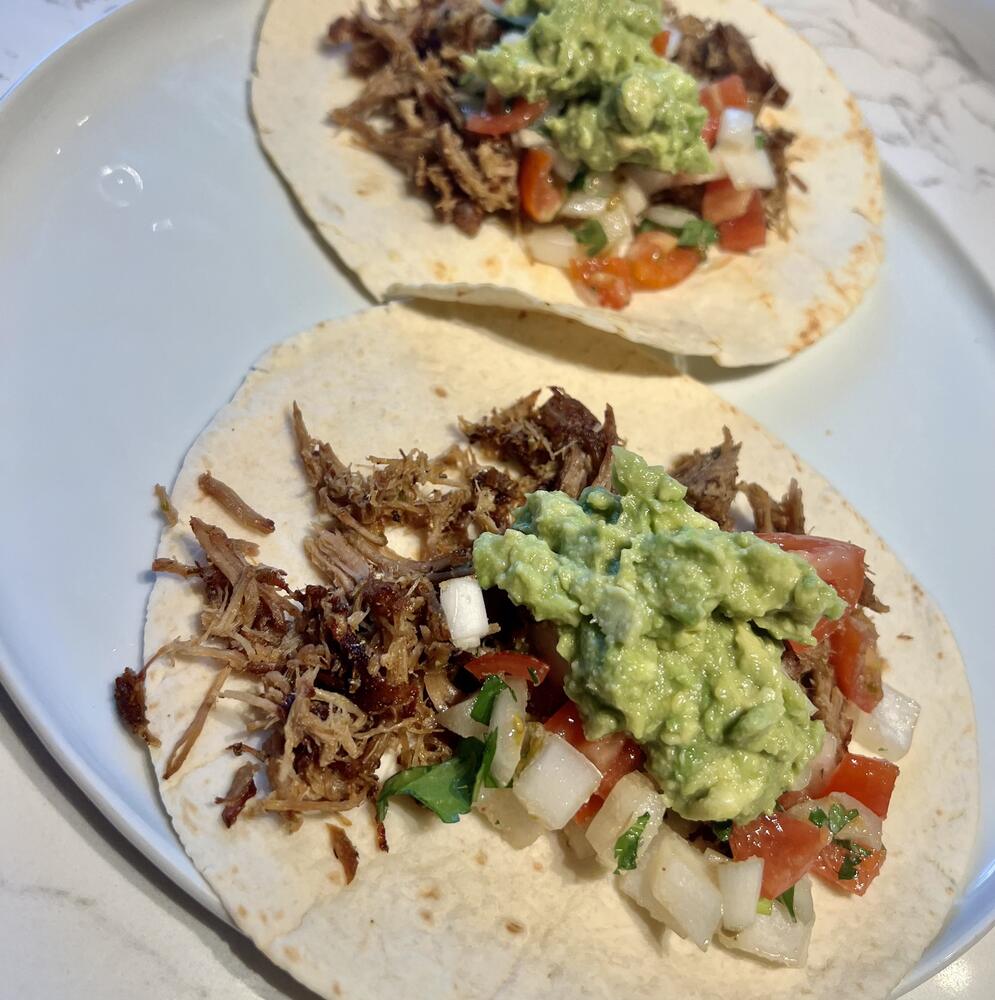
Shrimp with Chinese vegetable (snow pea shoot aka dou miao)

Roasted cauliflower (my favorite i have this every night with guac)
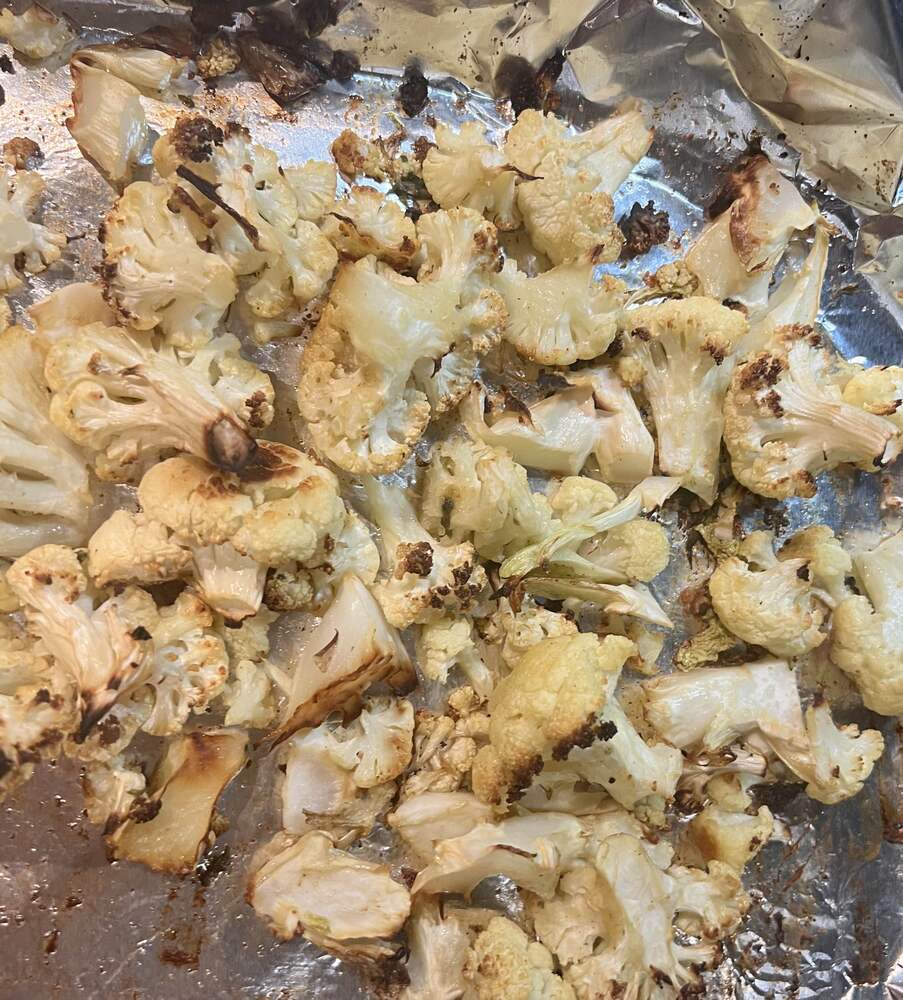
Asian snap peas and shrimp
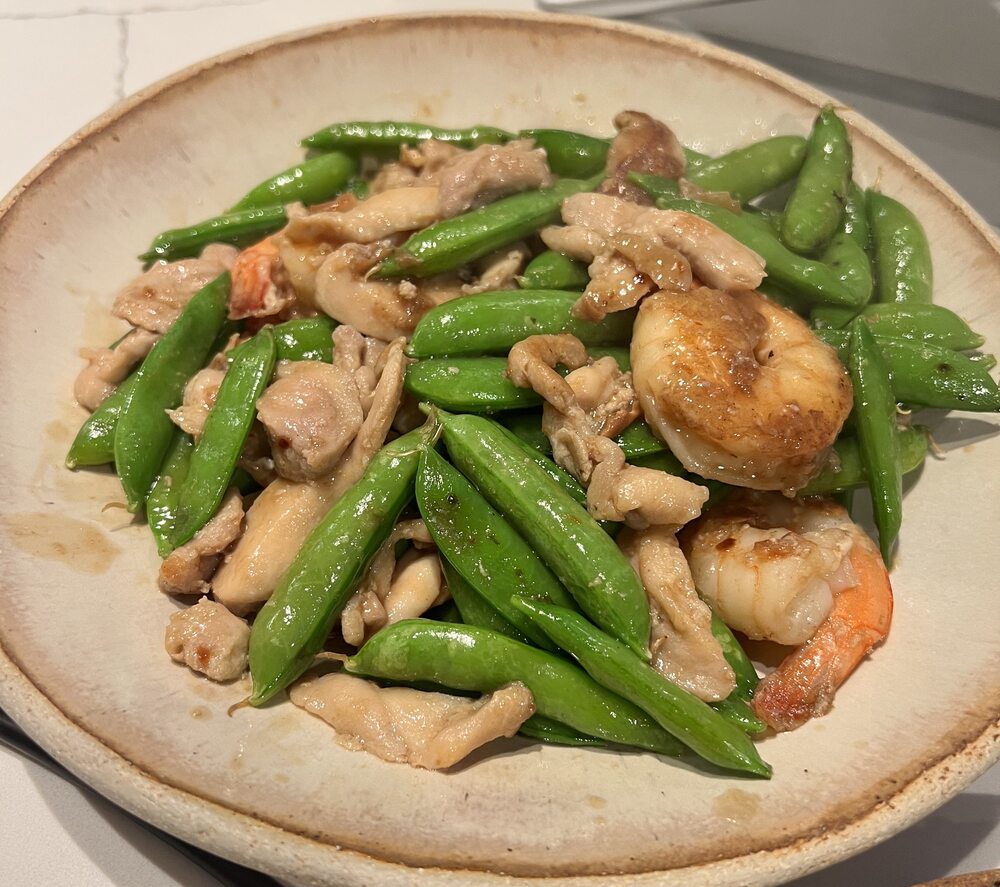
Photos of fancy home cooked meals
Cioppino

Chilean sea bass with Asian salad
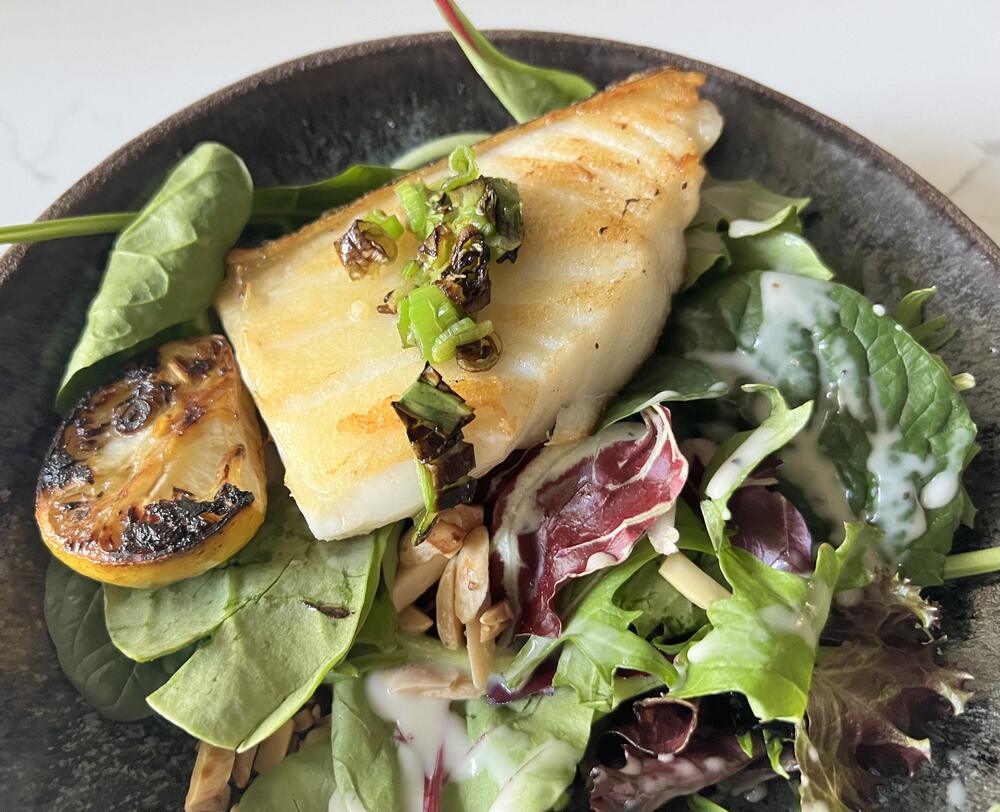
Grilled octopus

Ora King salmon and hamachi sashimi
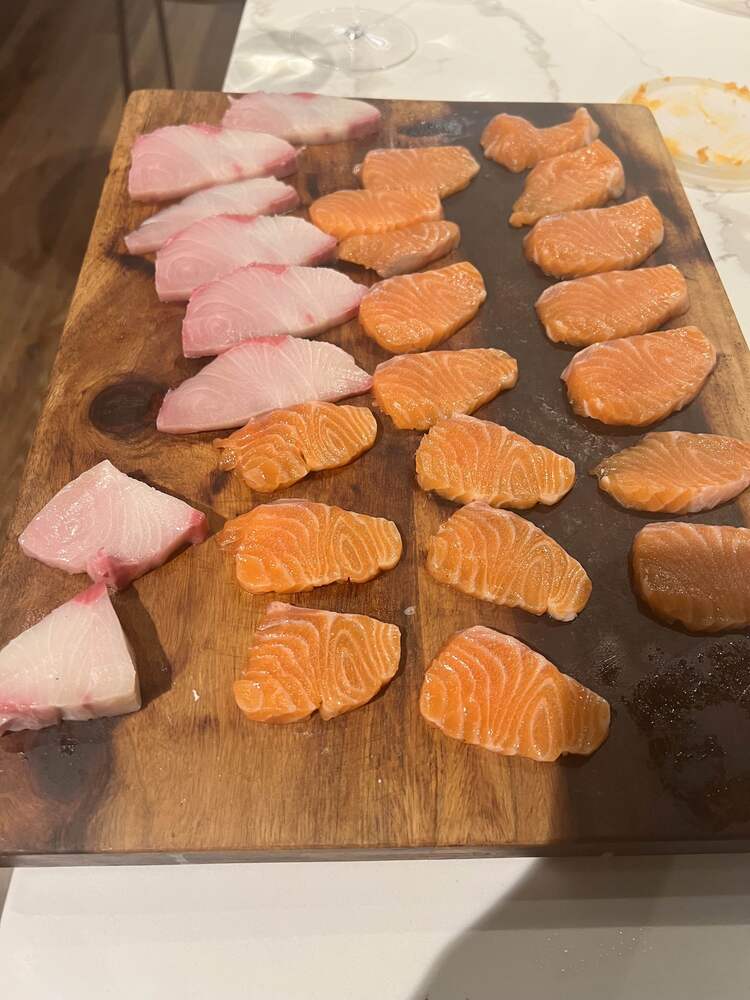
Asian style lobster with scallions and ginger
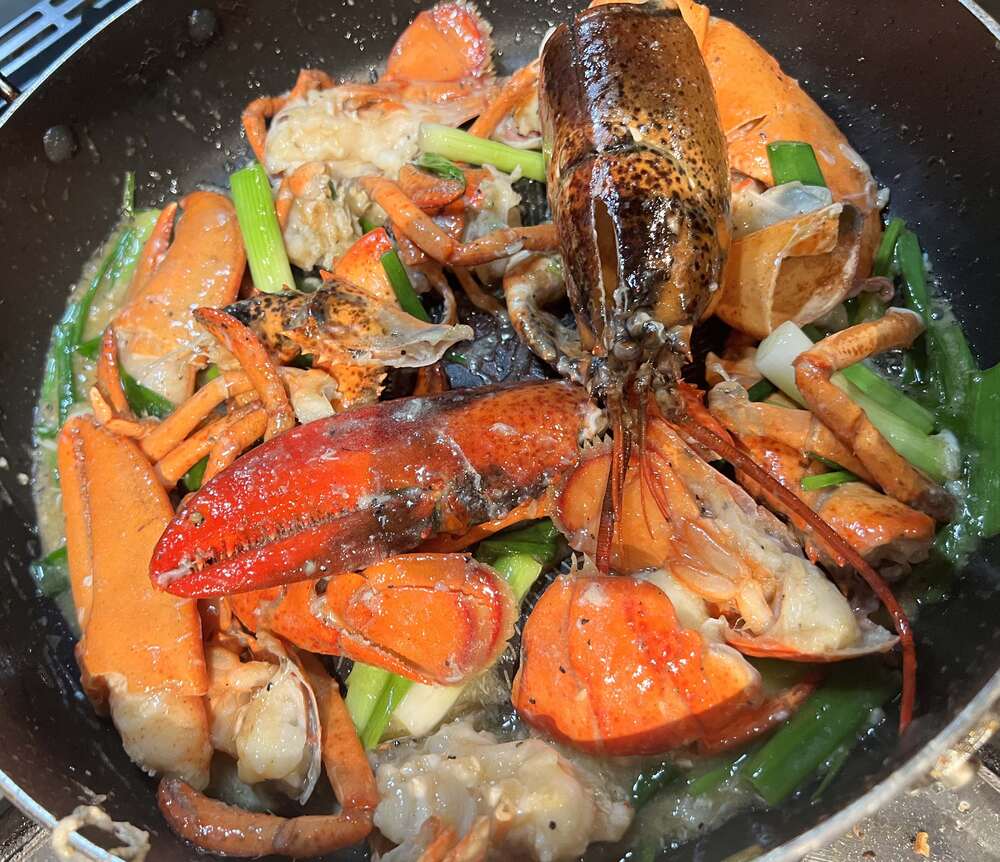
Take insights and make them a part of your life.
Become a Member →